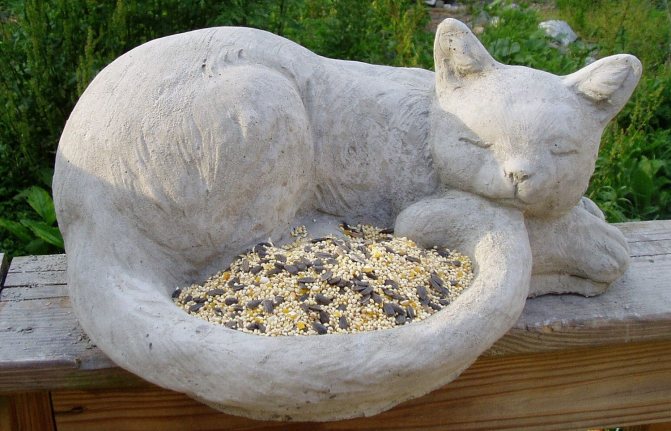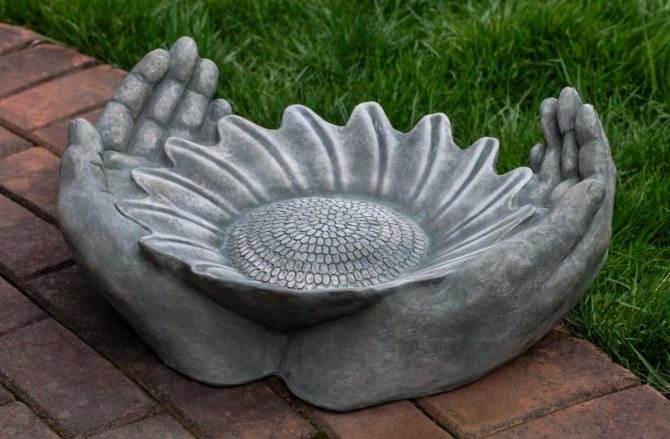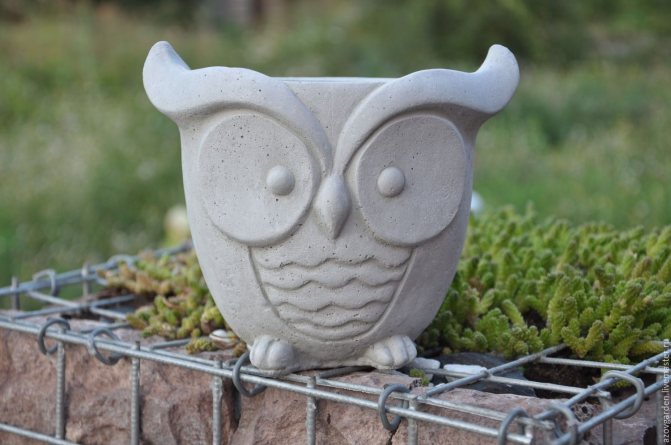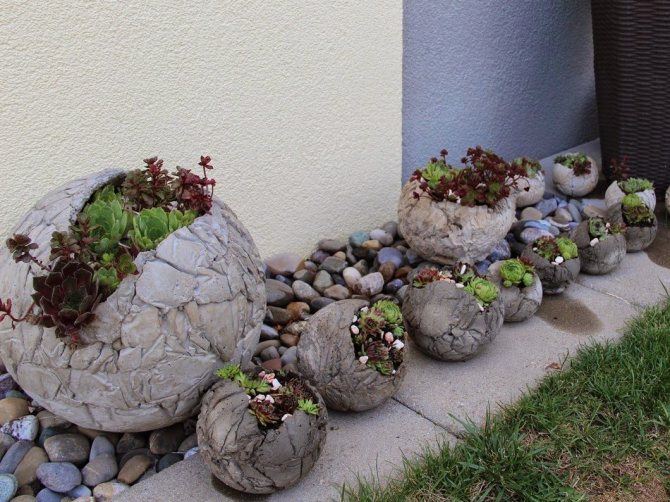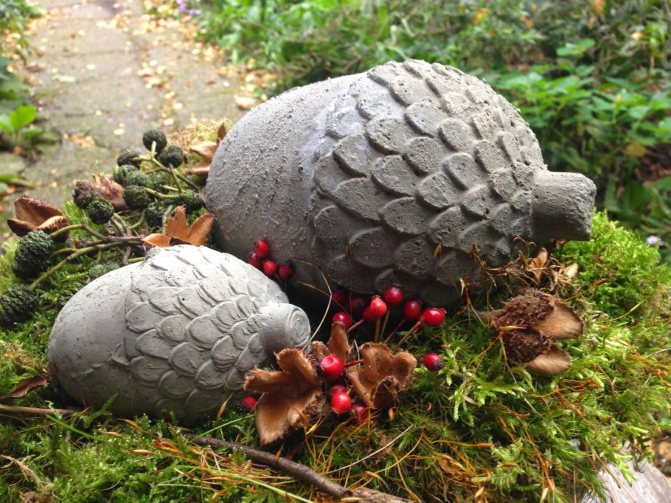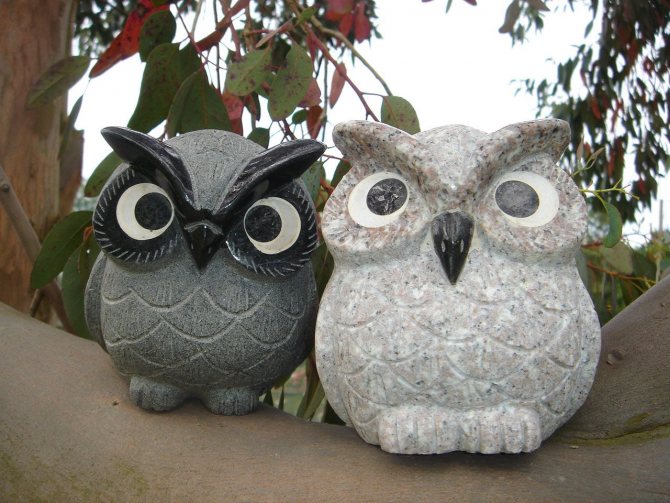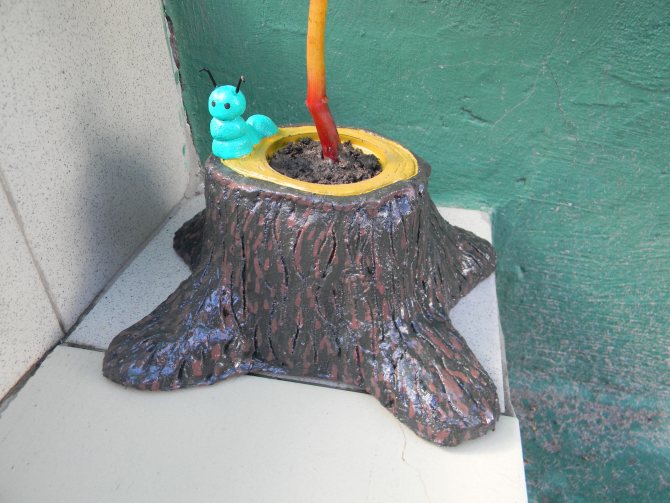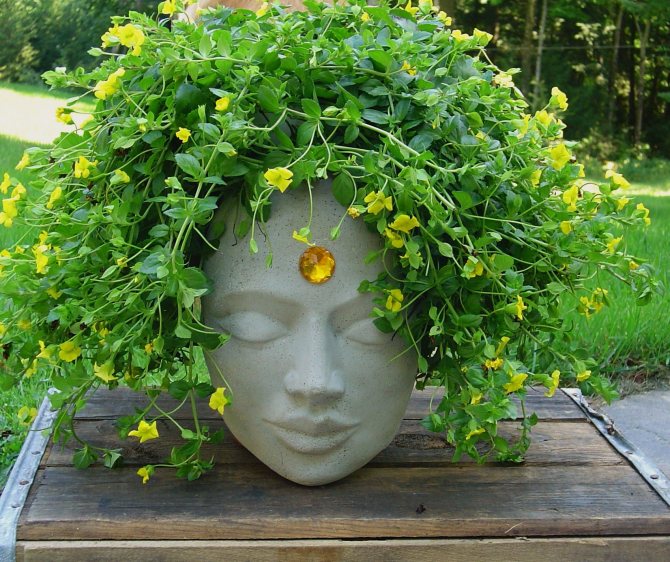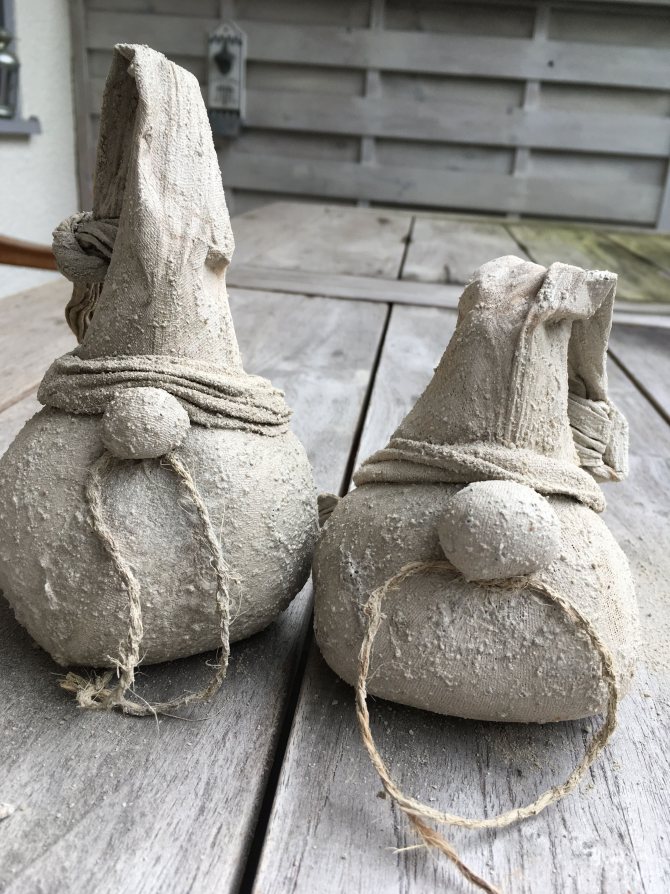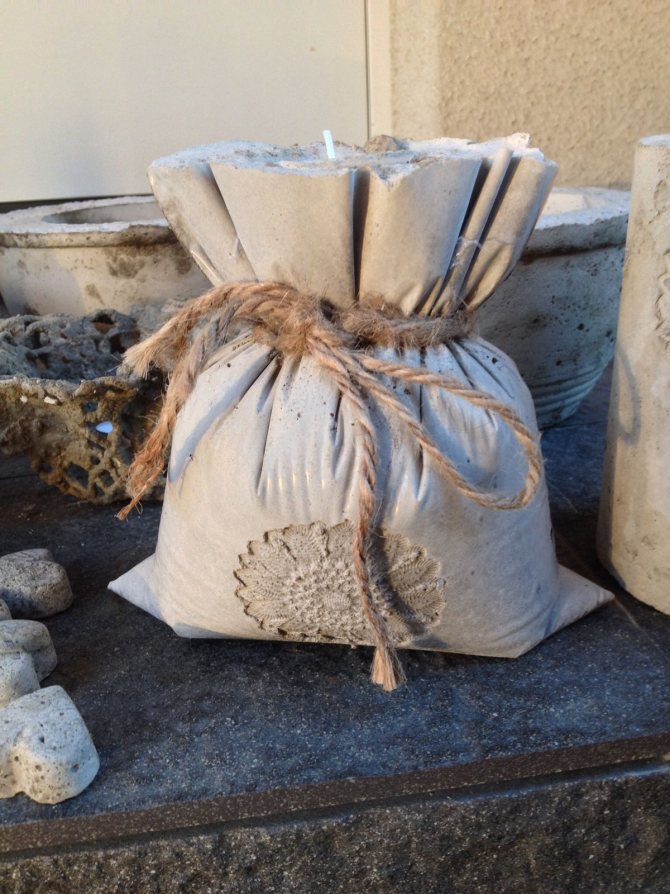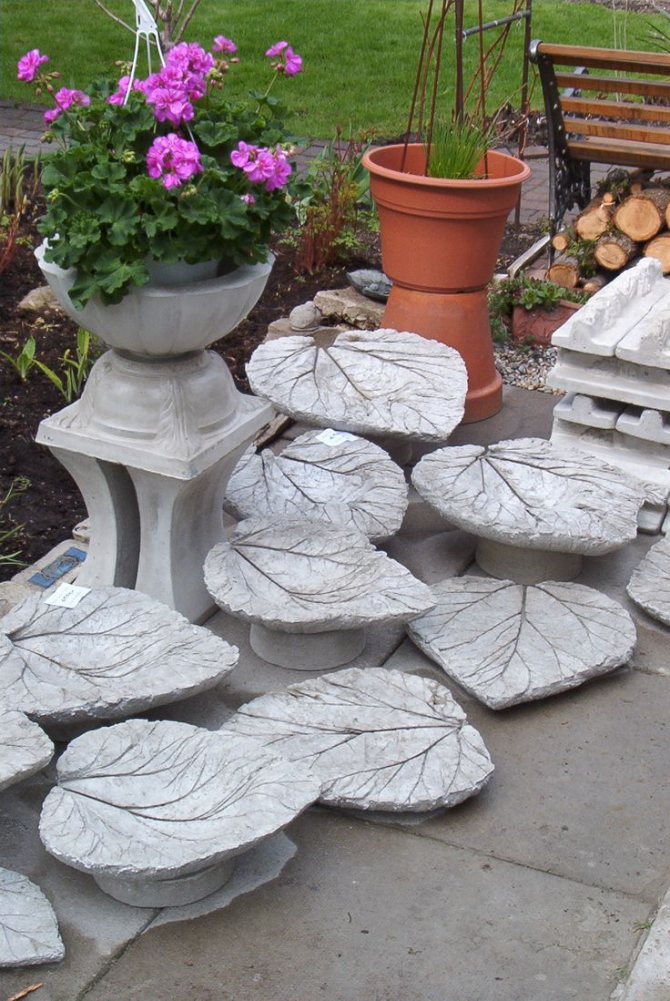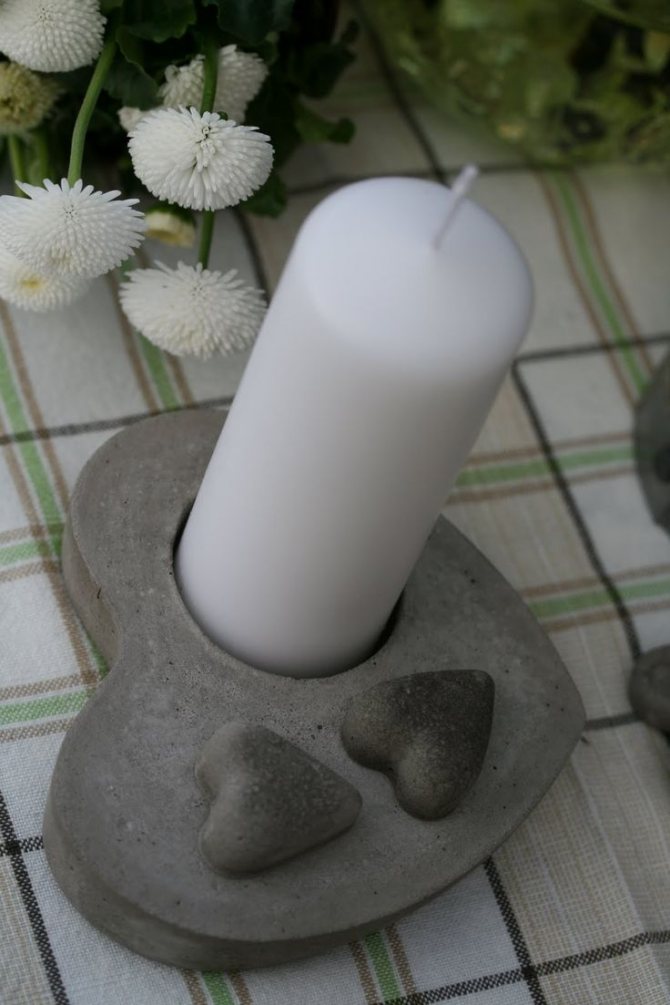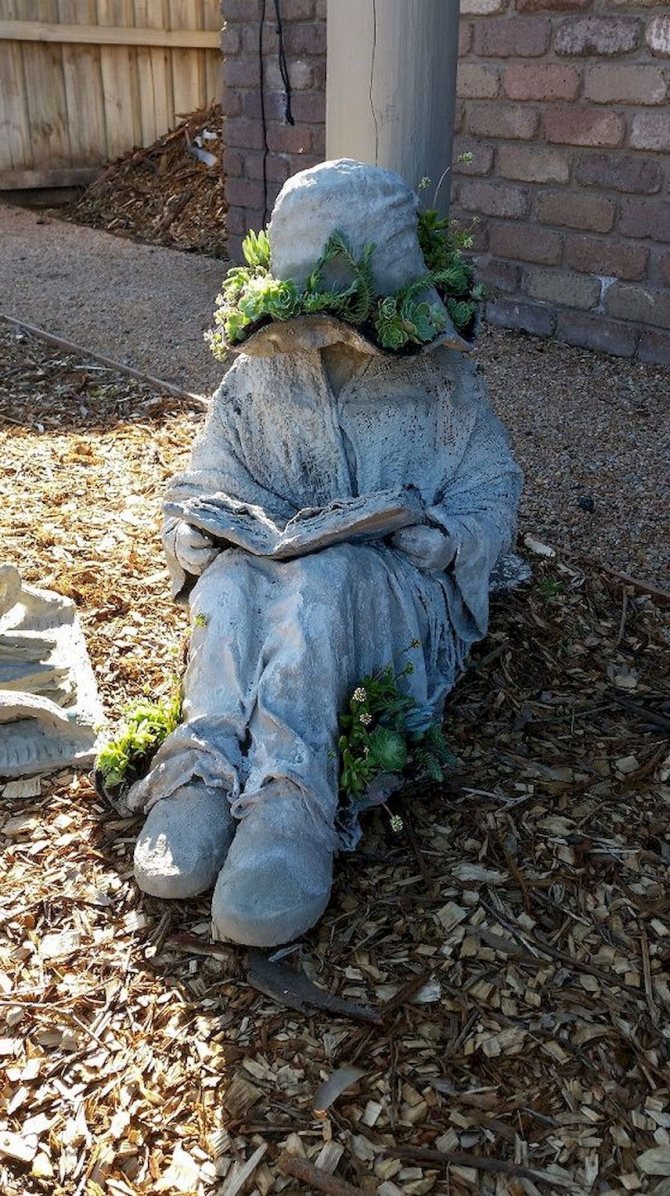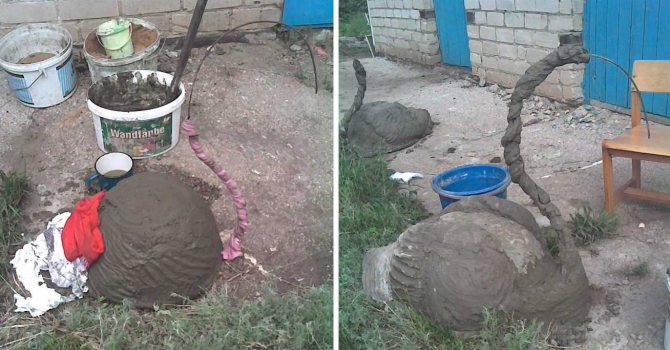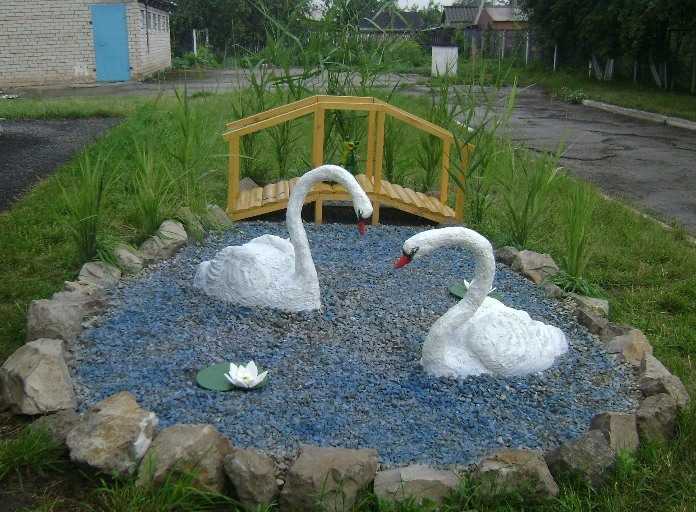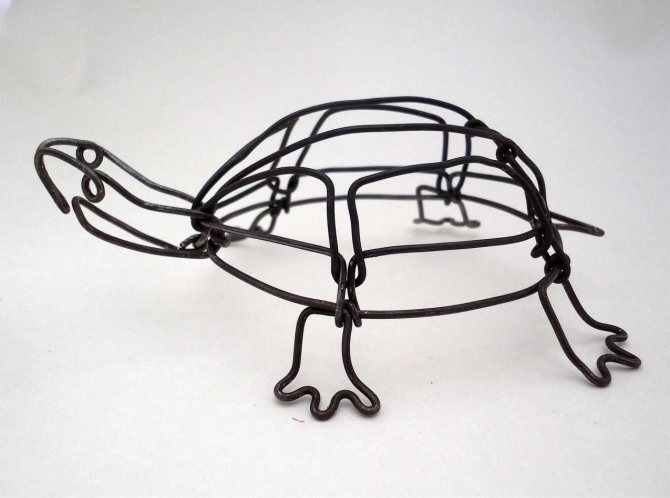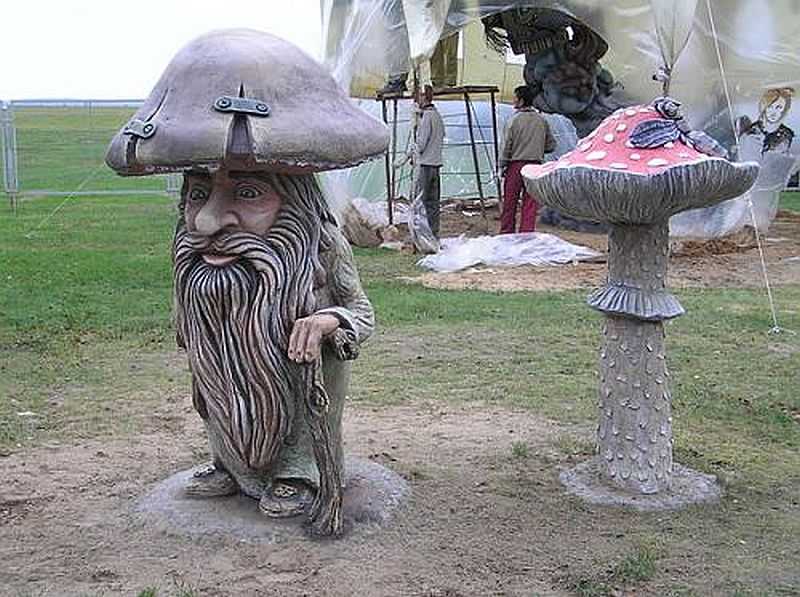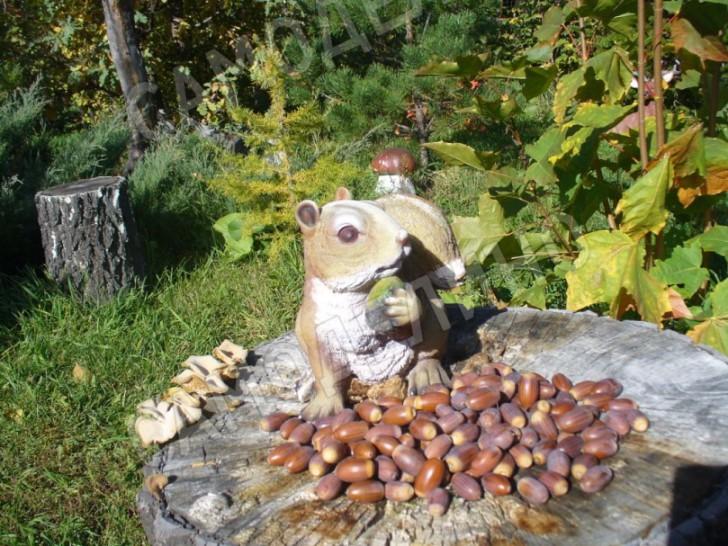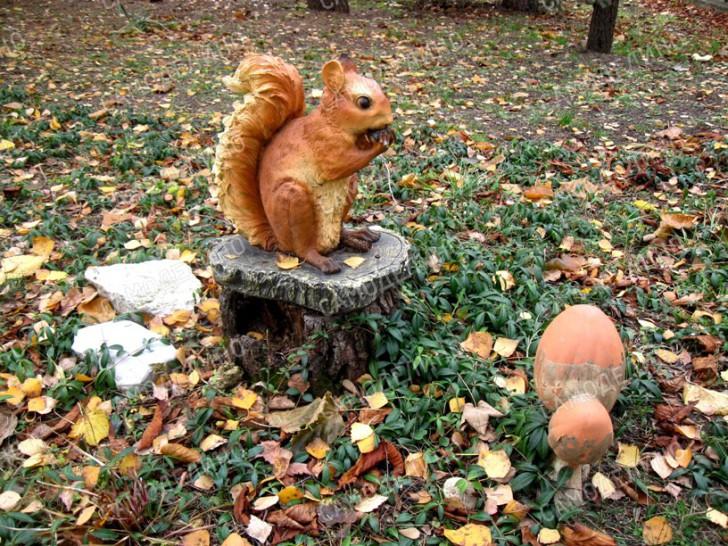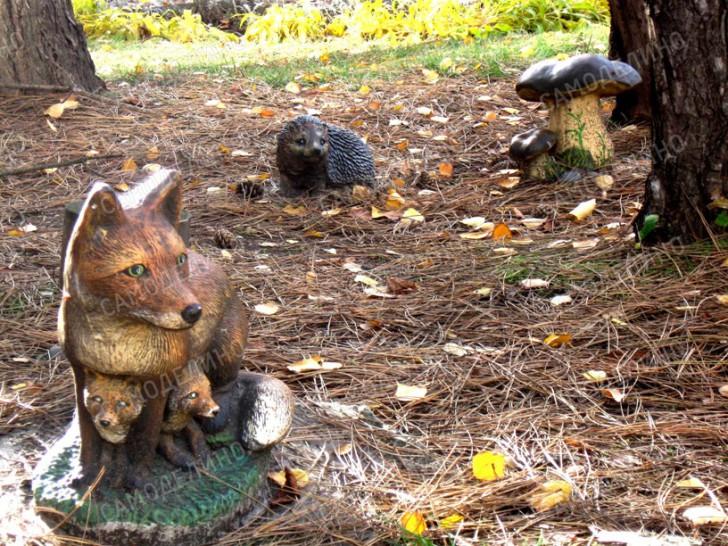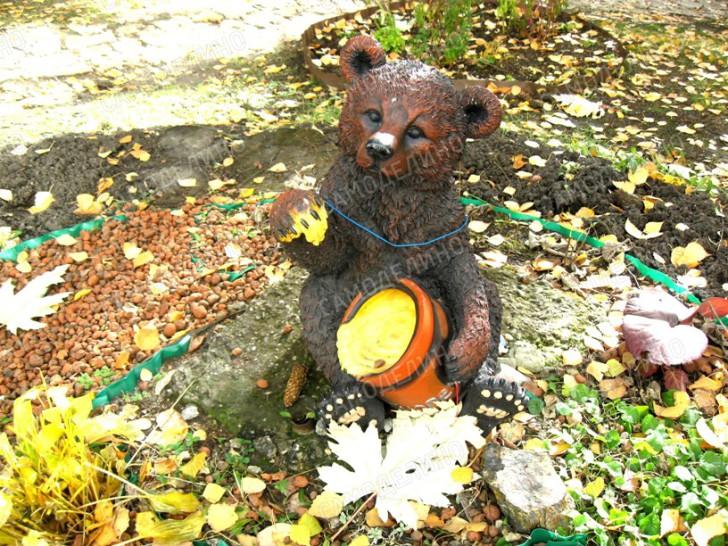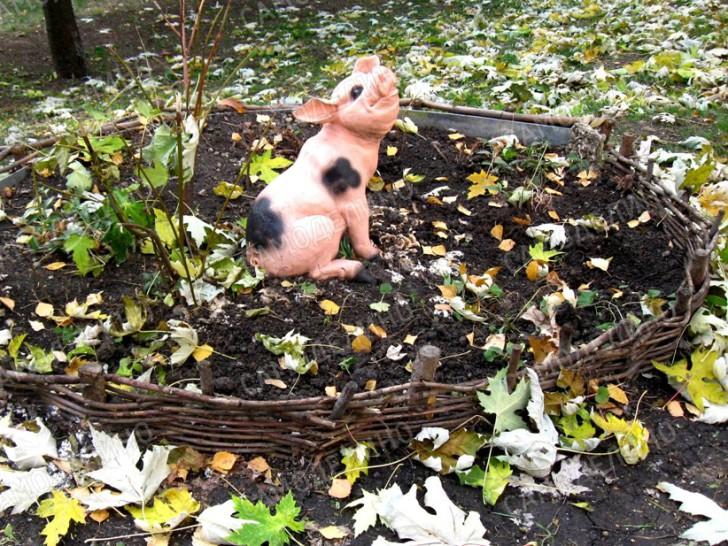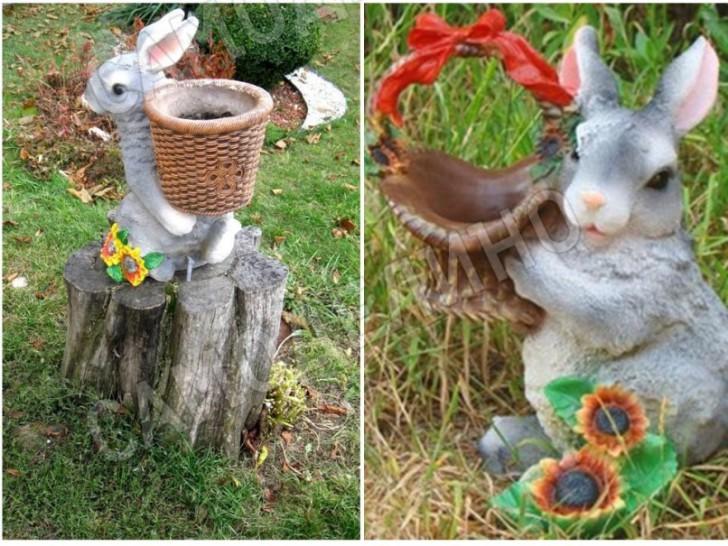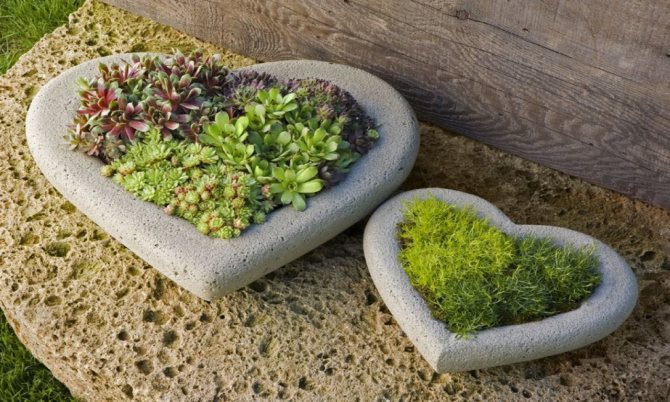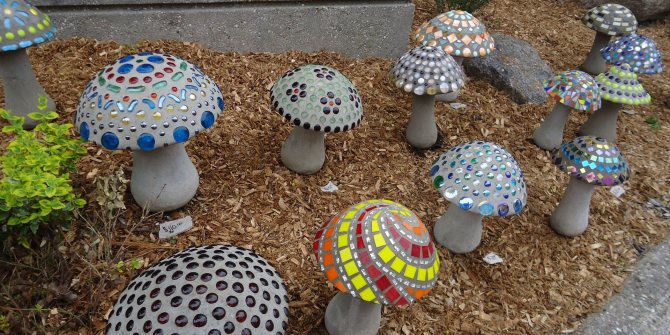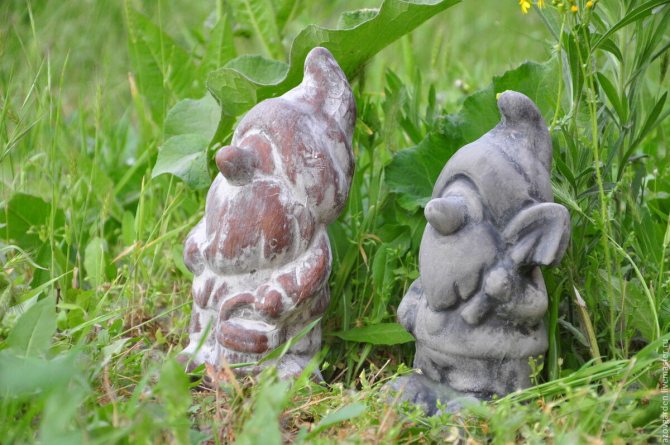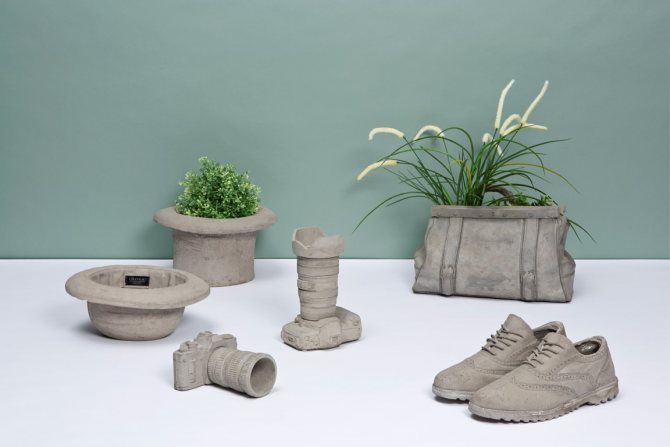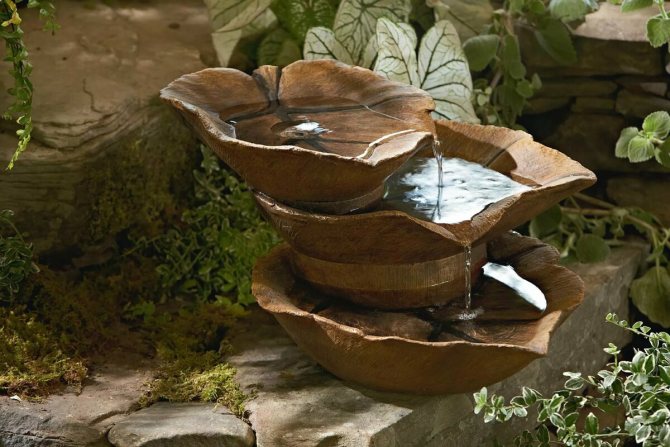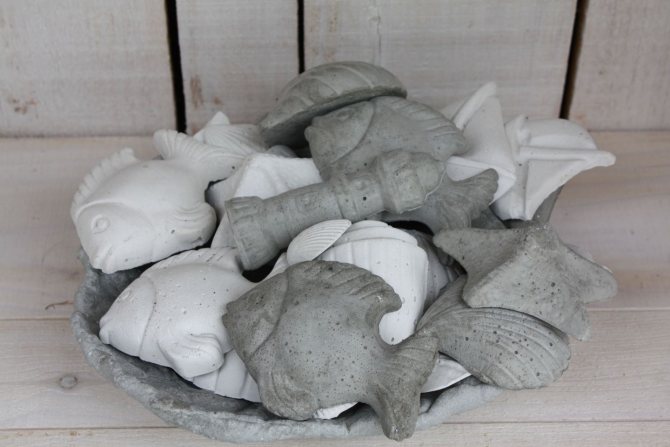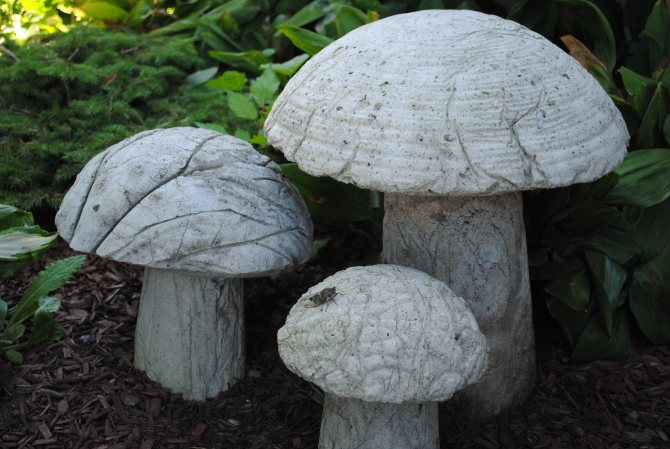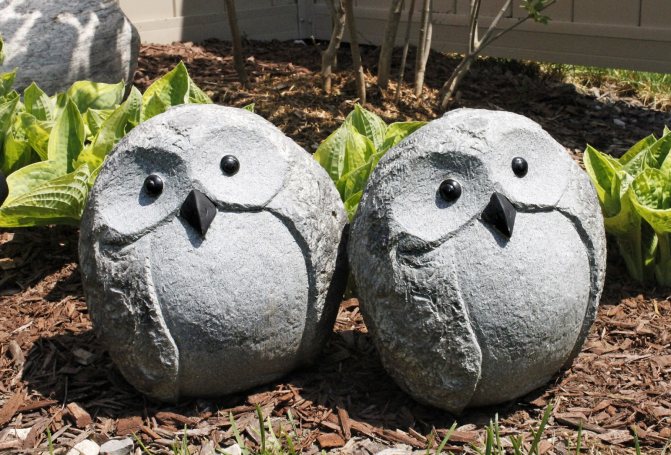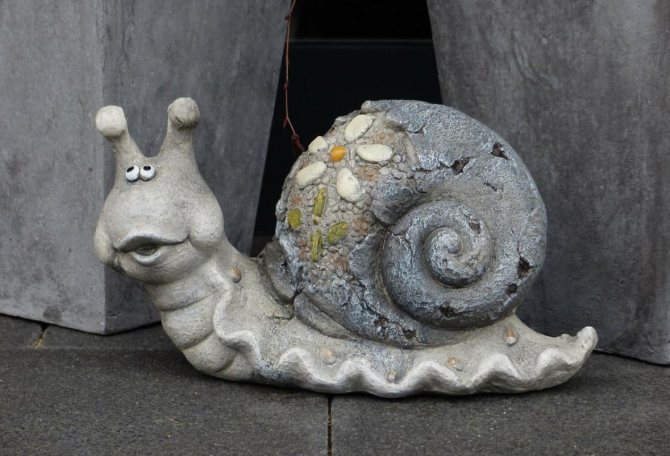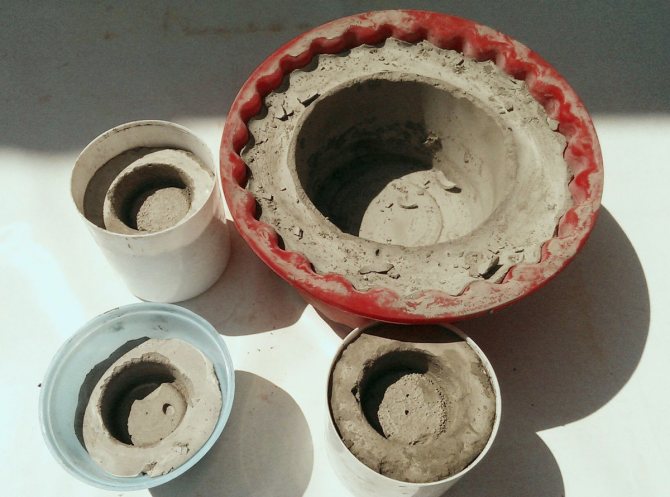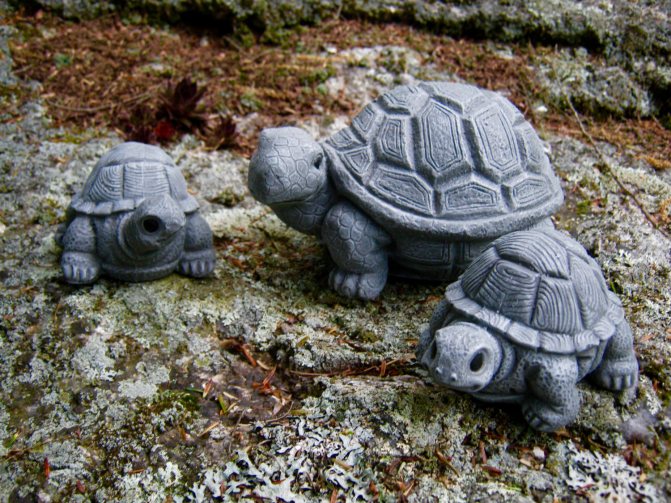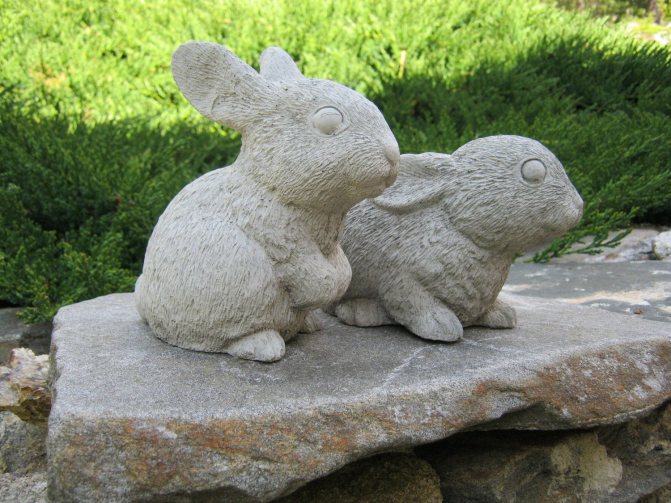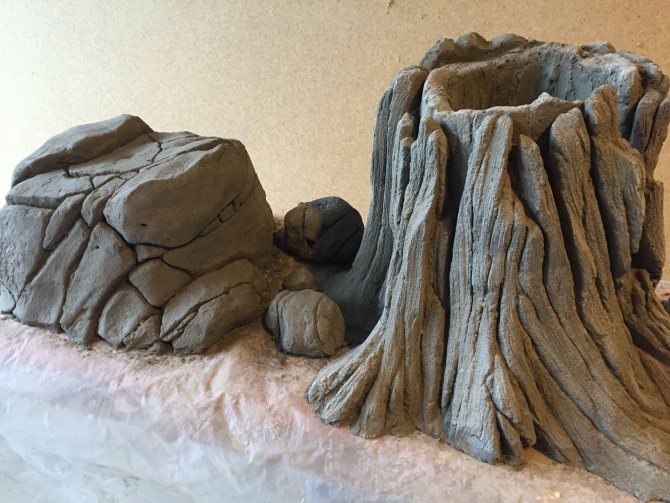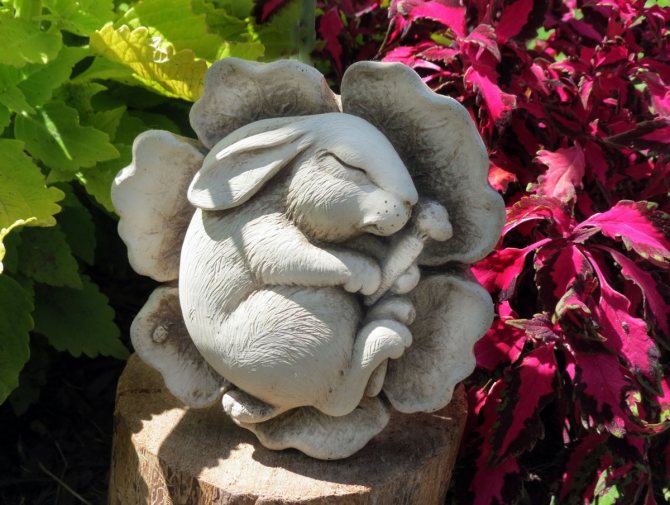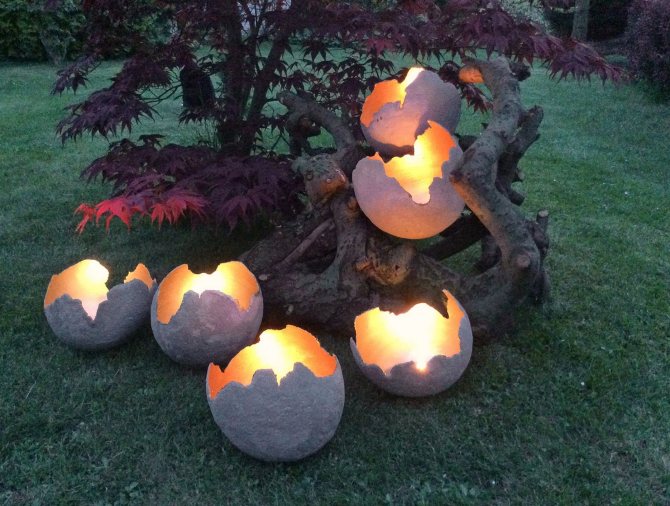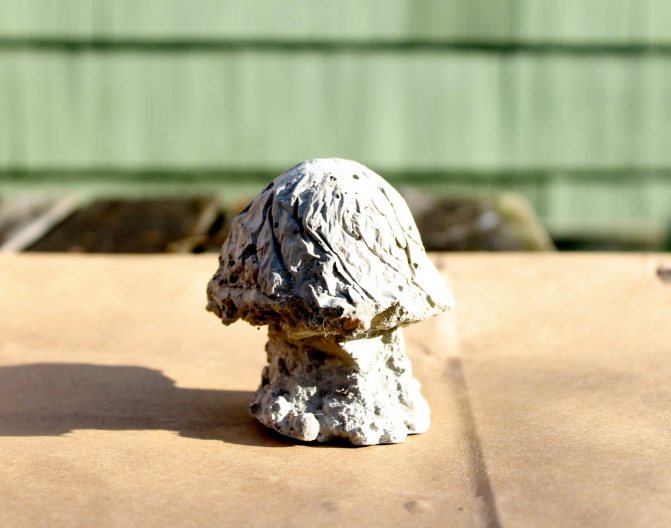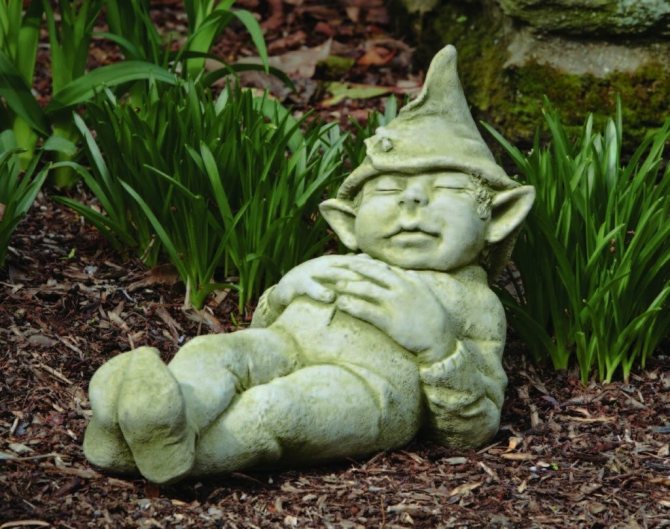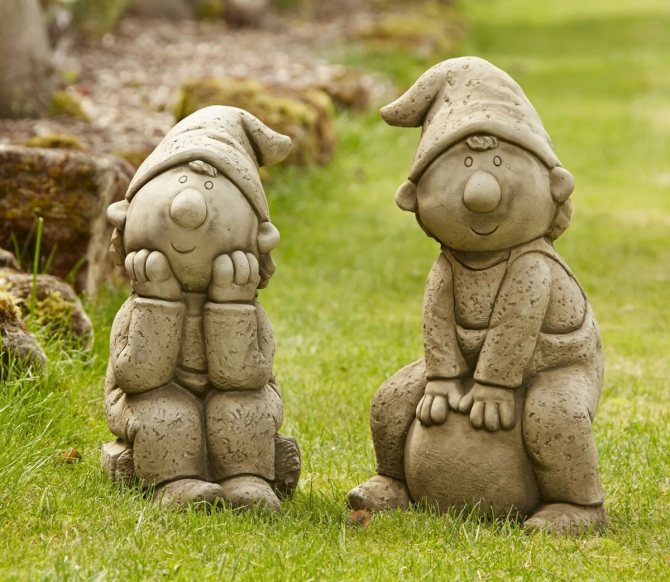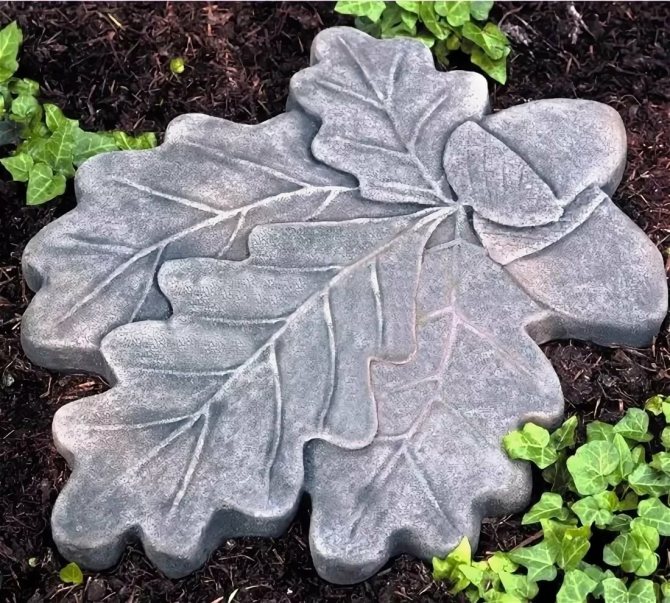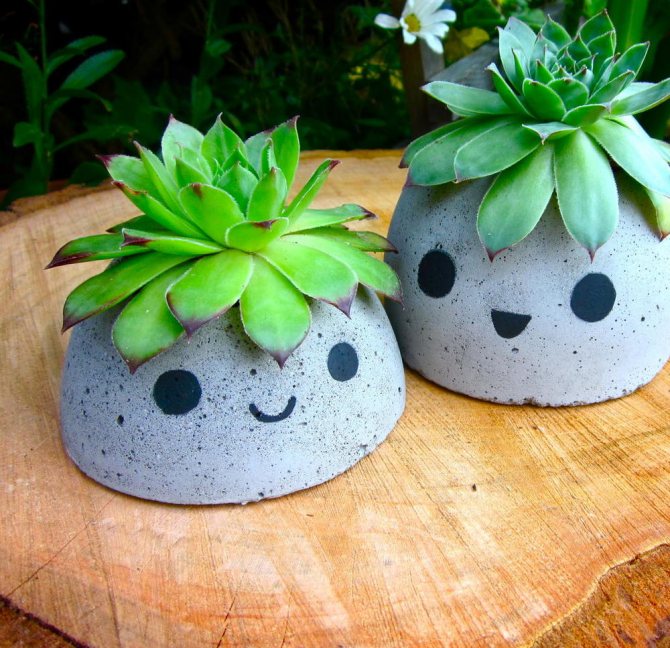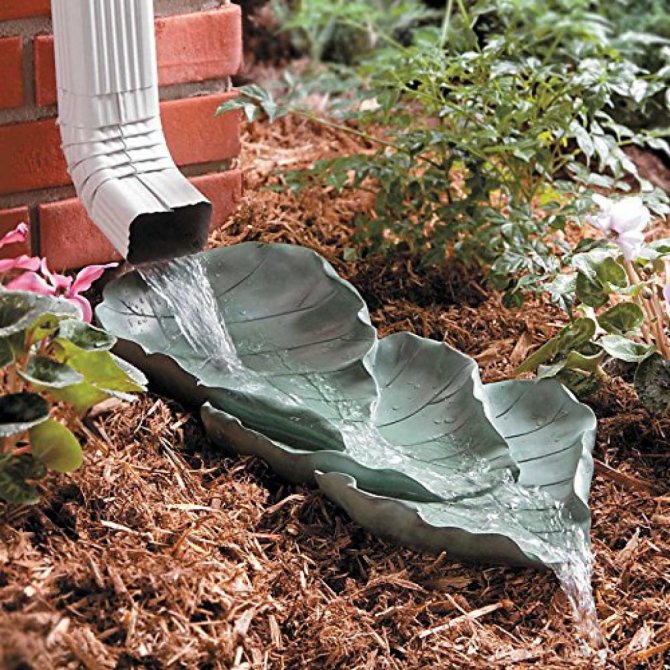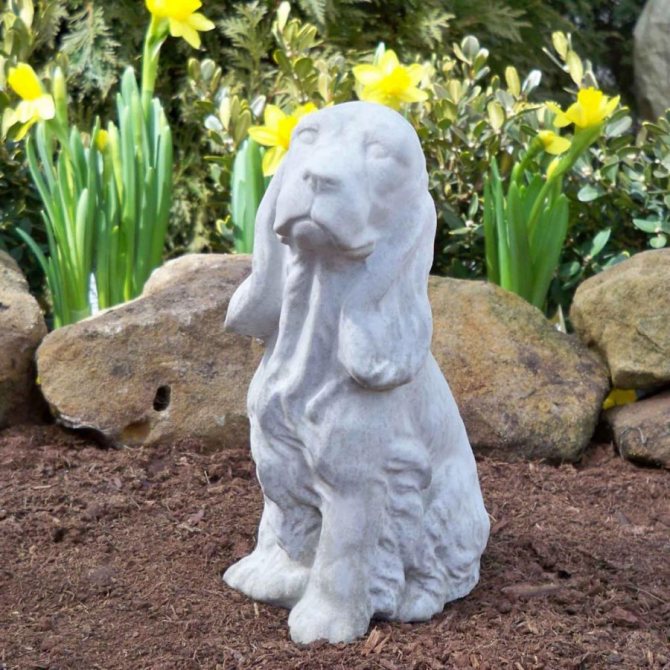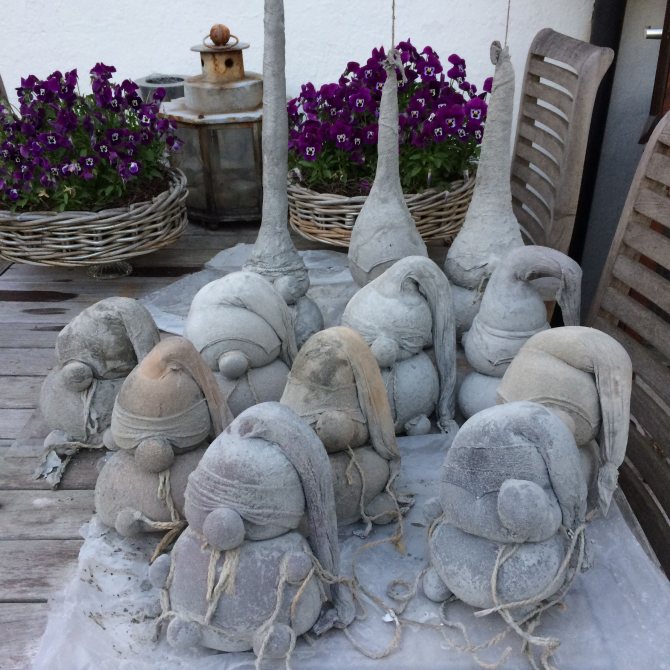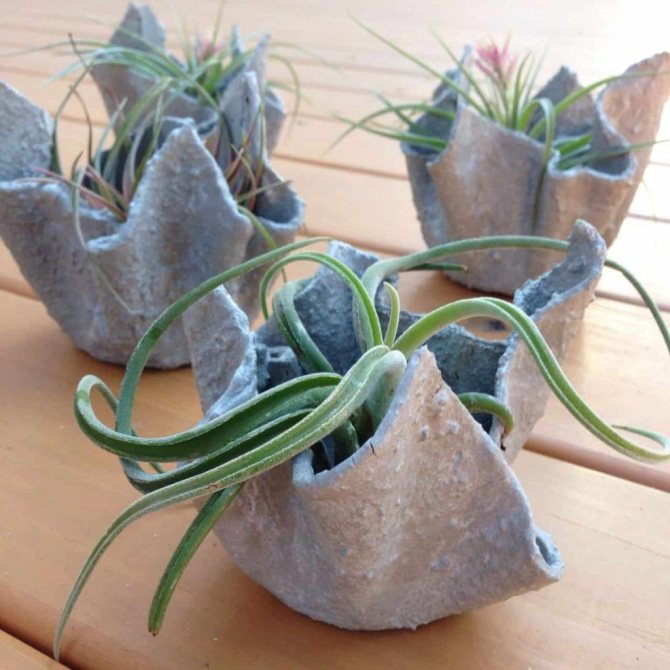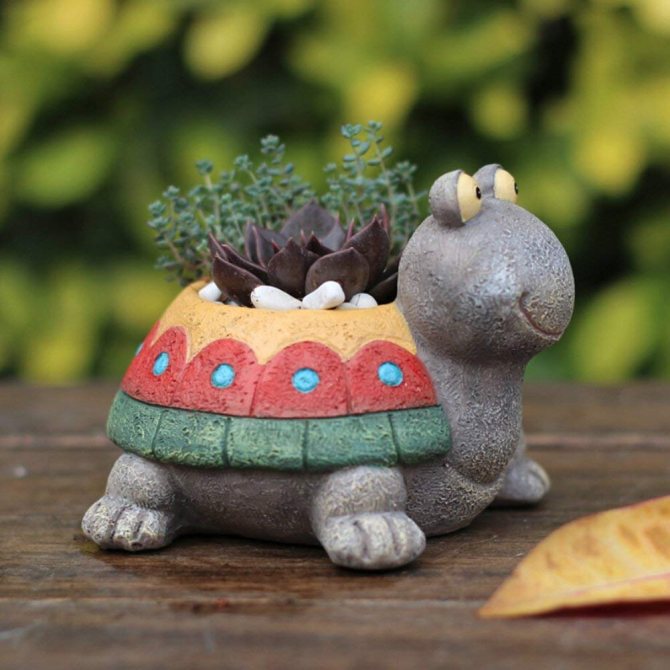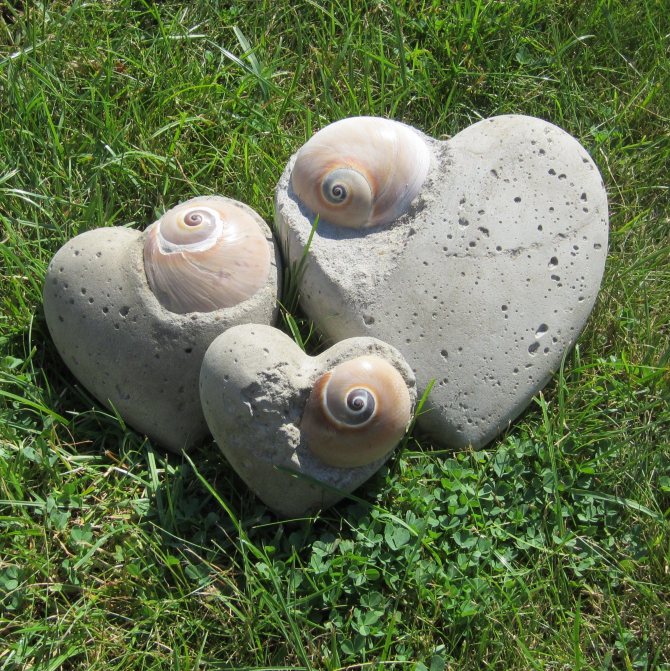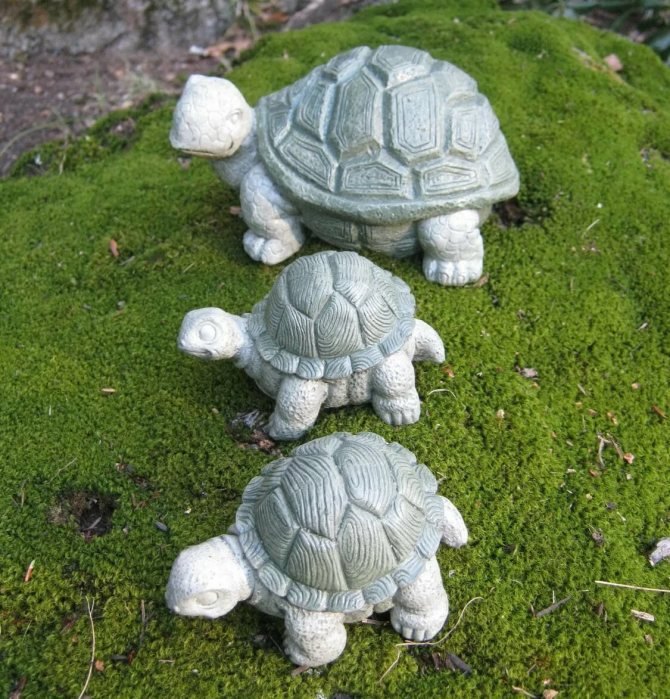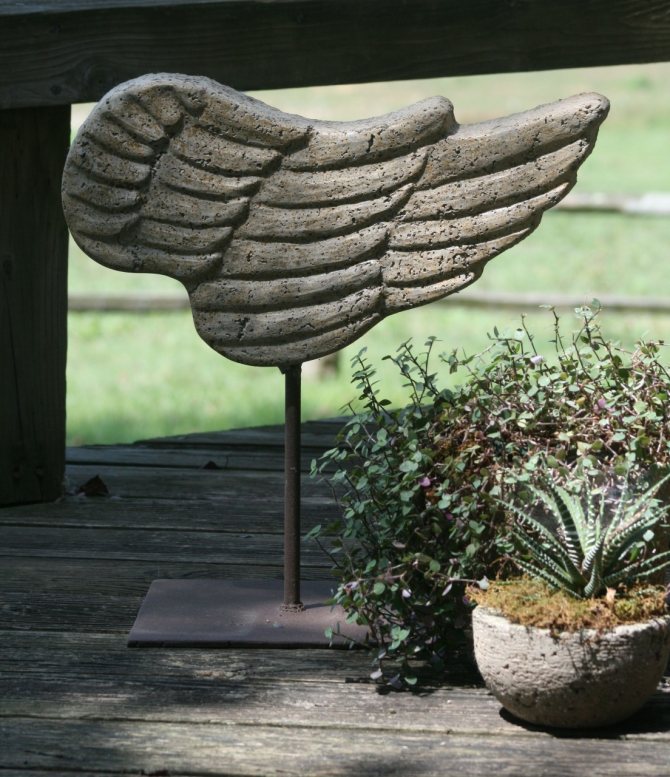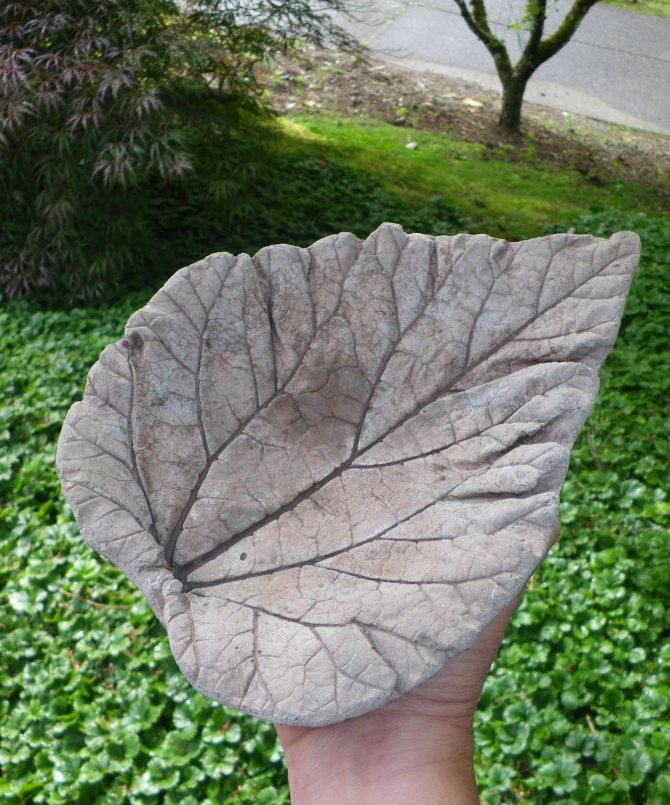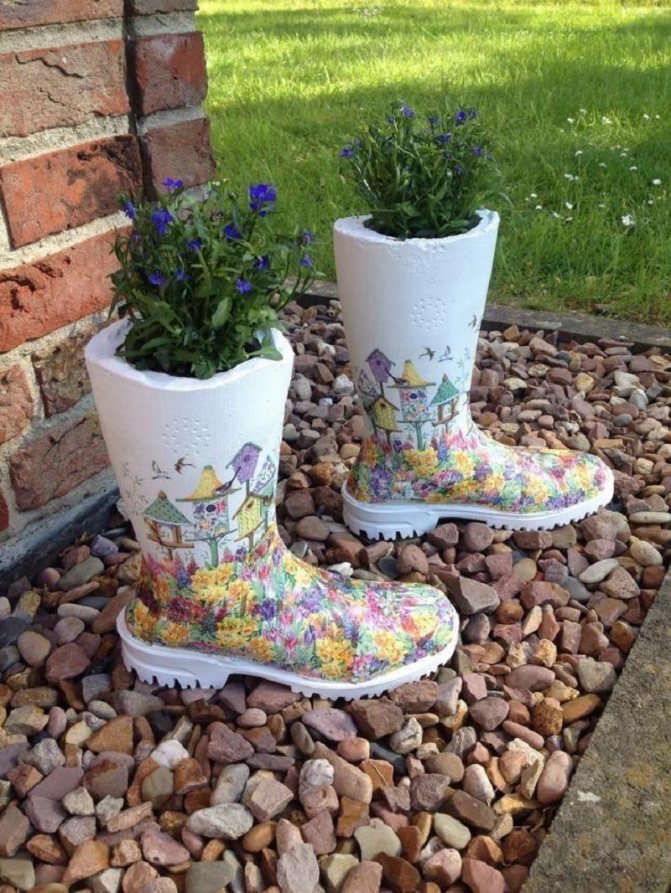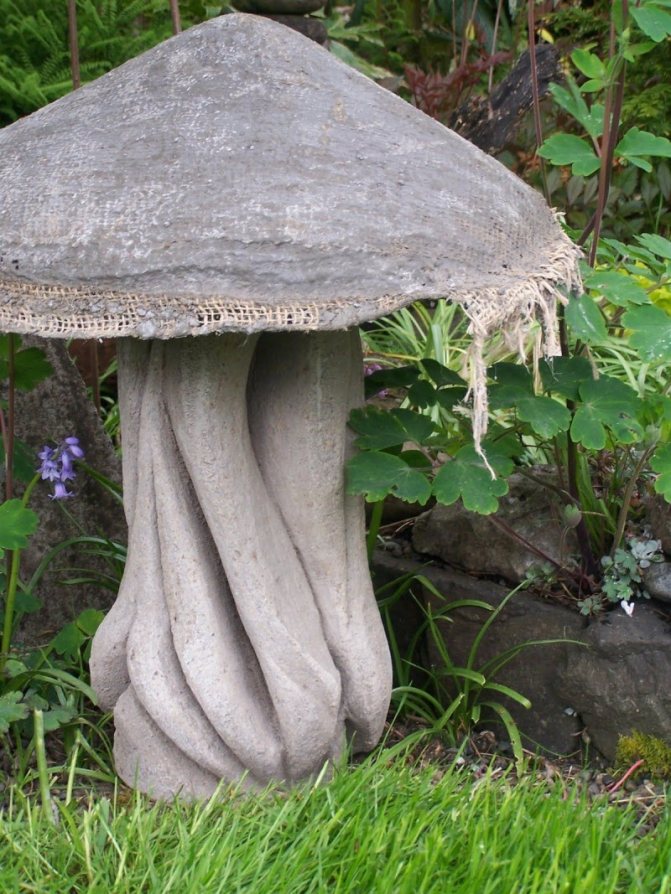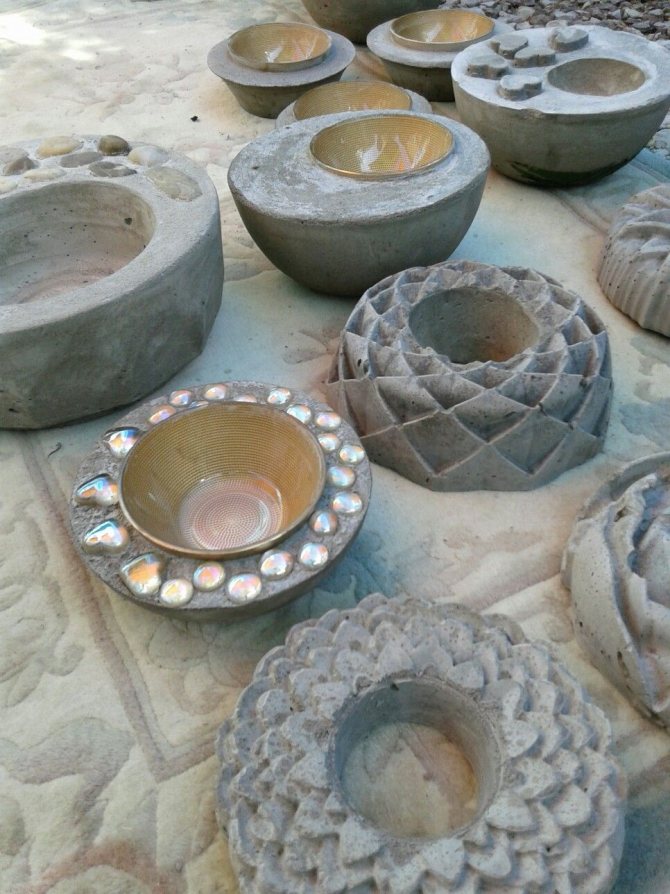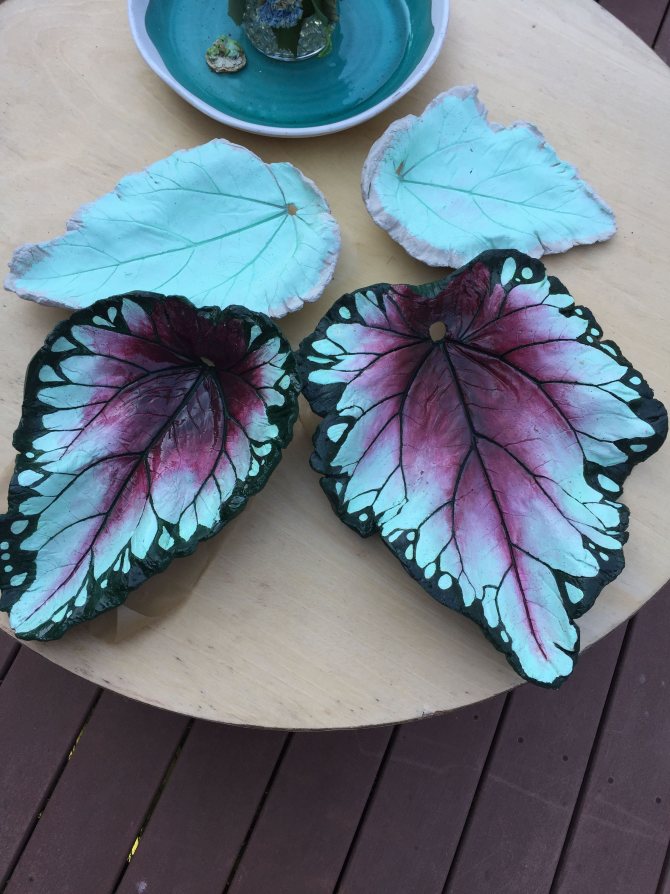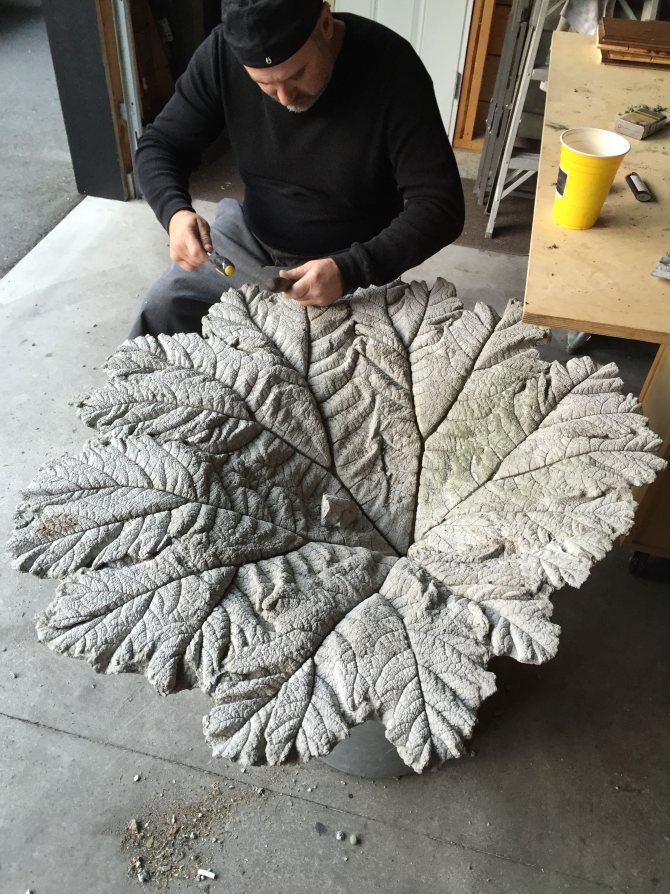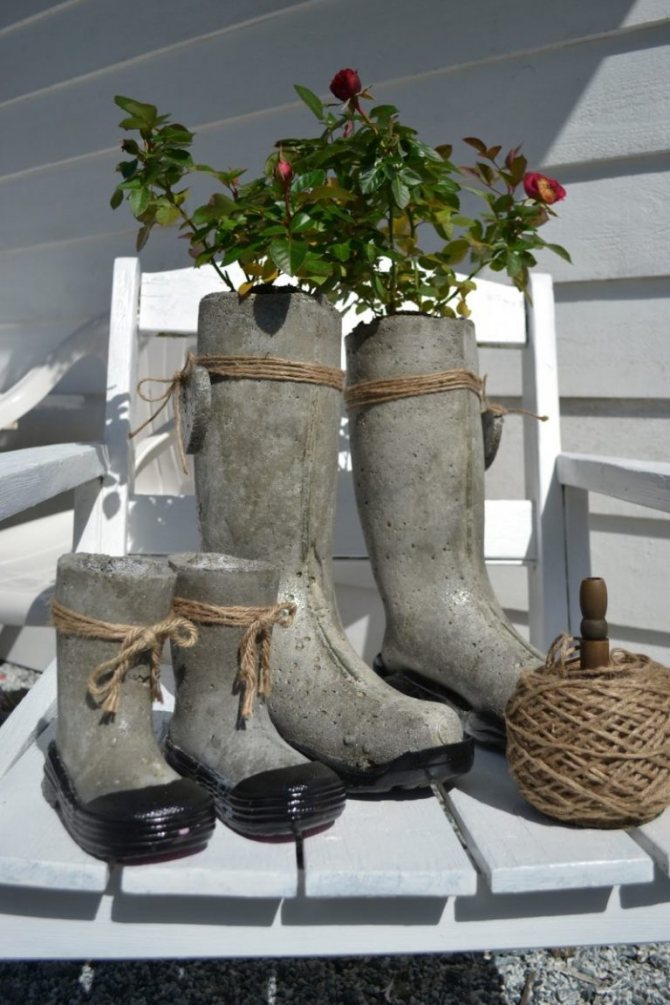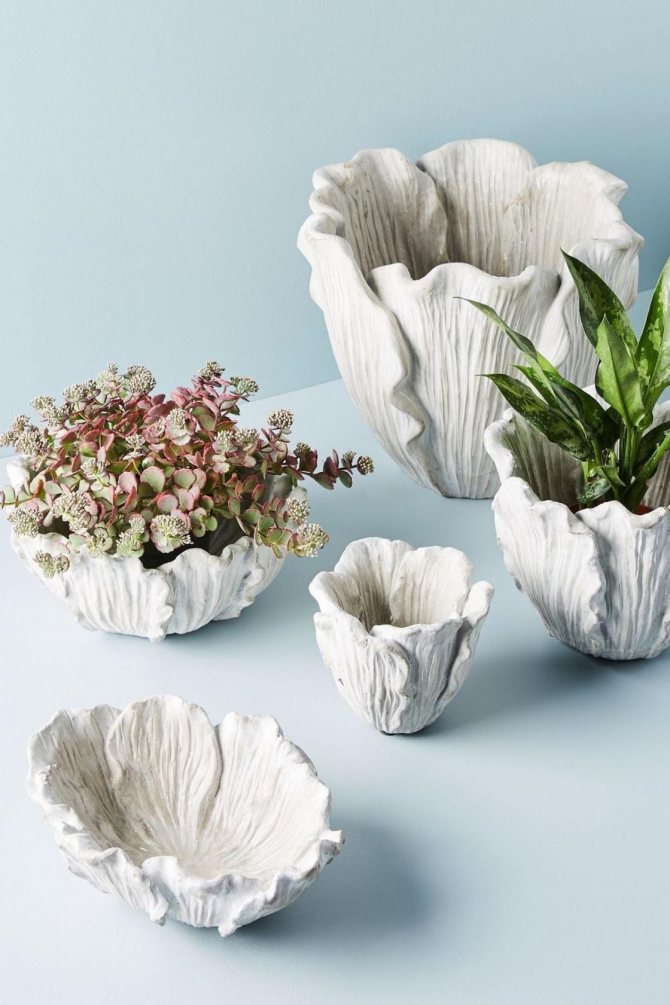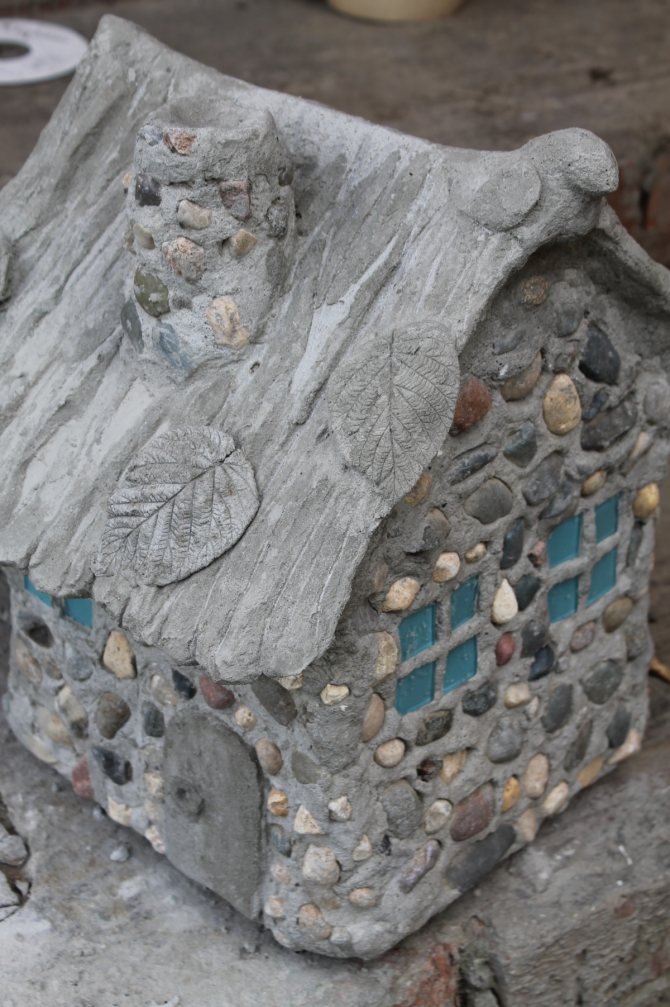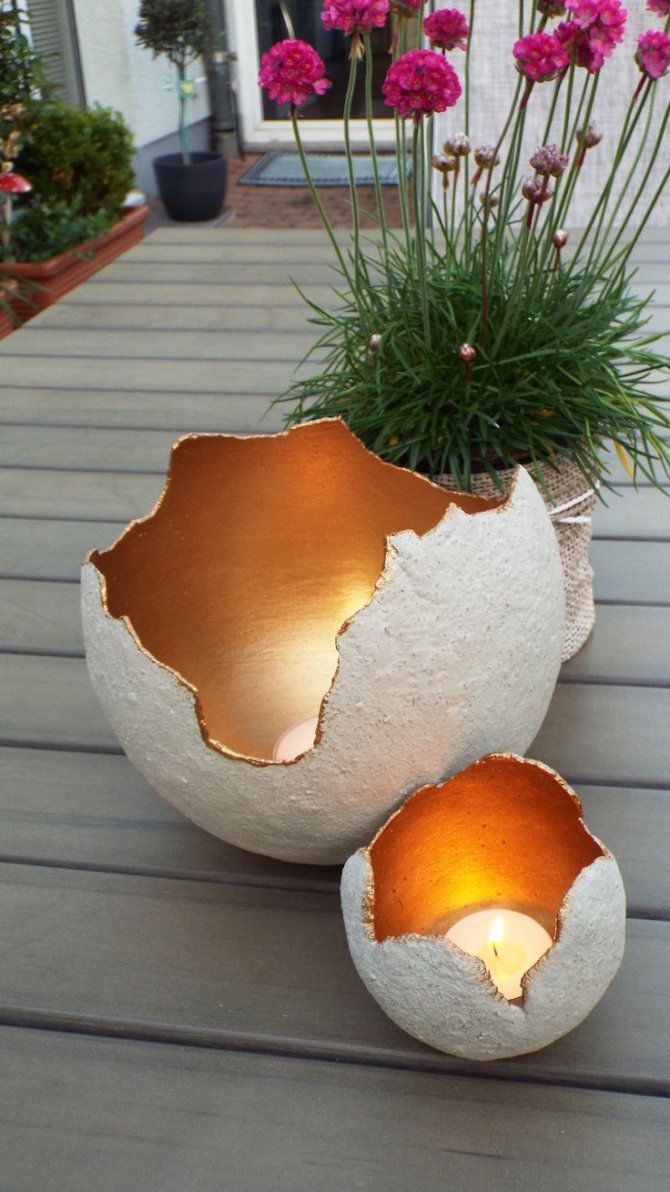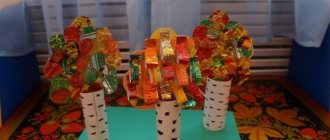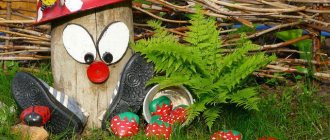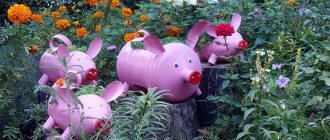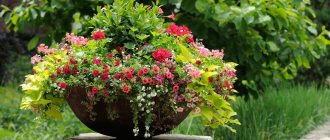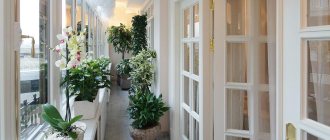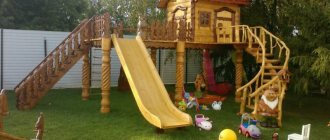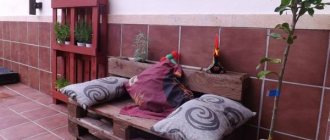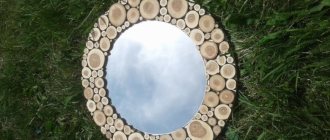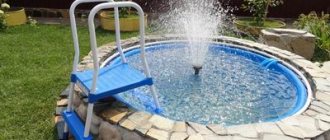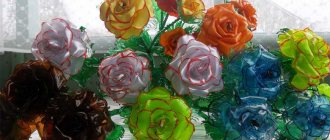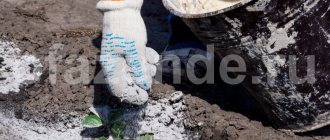Magnificent opportunities are provided to lovers of unusual decor with their own hands. In case you have extra pounds of cement. Then we bring to your attention various cement crafts.

We assure you that homemade products will delight the eyes and are unique elements of beauty indoors or in the garden. From concrete, you can create any figures that pop into imagination. Also, any dimensions are possible that are limited only by the amount of concrete mix.
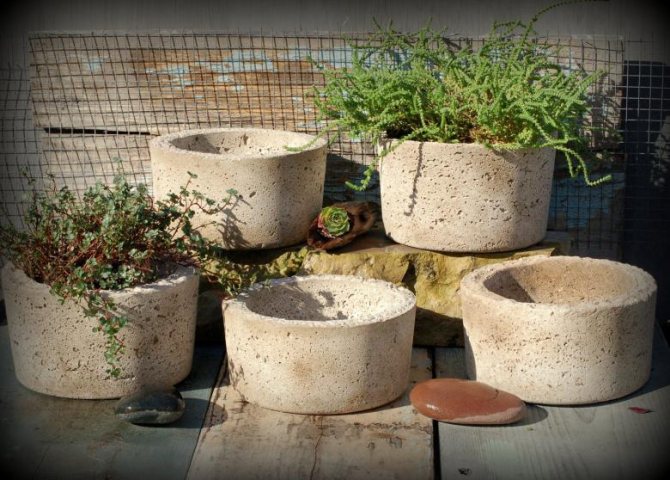

A special advantage lies in the ability of the craftsman to create crafts to his liking. For example, a flower bed can be created according to an individual design and not have to resort to calls to special companies that trade in this. We strongly recommend at least to try it, it will definitely not turn out badly and ugly. And if successful, this will save you money.
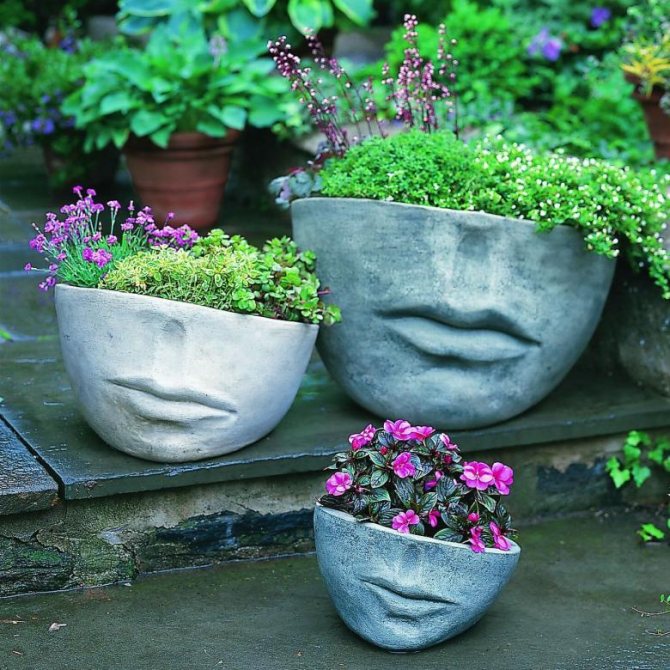

As your skill level rises, you can easily cast gnomes out of cement and paint and bring them to life with bright colors.
Benefits of Cement Crafts
- One of the most important advantages of this substance is its relative cheapness.
- Durability and strength of finished structures, resistance to weather conditions.
- Concrete can be painted well in various colors. Decorating doesn't bring any problems either.
- Ease of use of concrete. The main difficulty lies in creating a stencil structure for the fill.
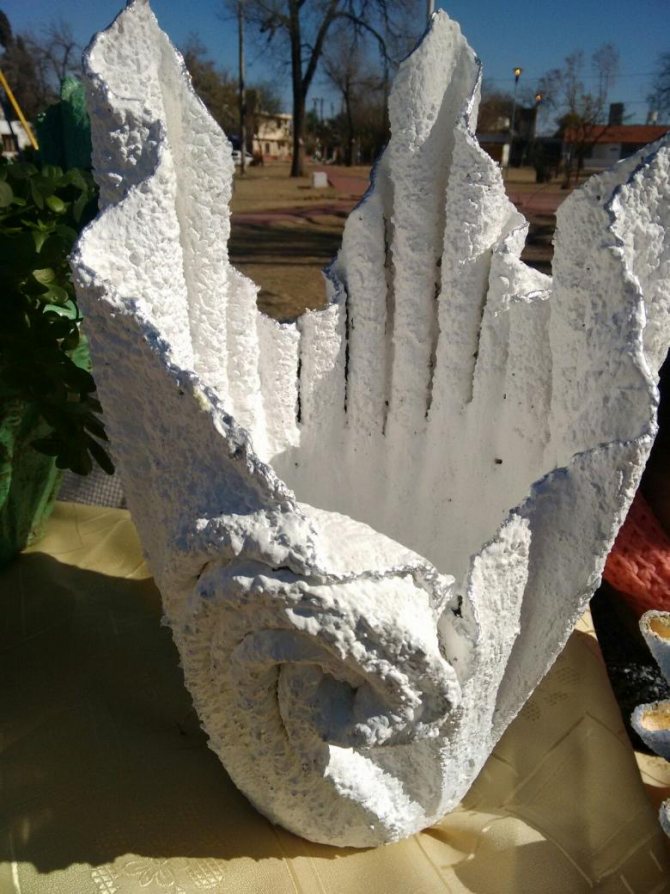

Thread ball
Remember the cute balls of PVA glue and knitting threads? The same can be done from concrete. To work you will need:
- Rubber ball or fitball ball.
- The knitting threads are thick or old T-shirt trimmings that have been pre-twisted in strands.
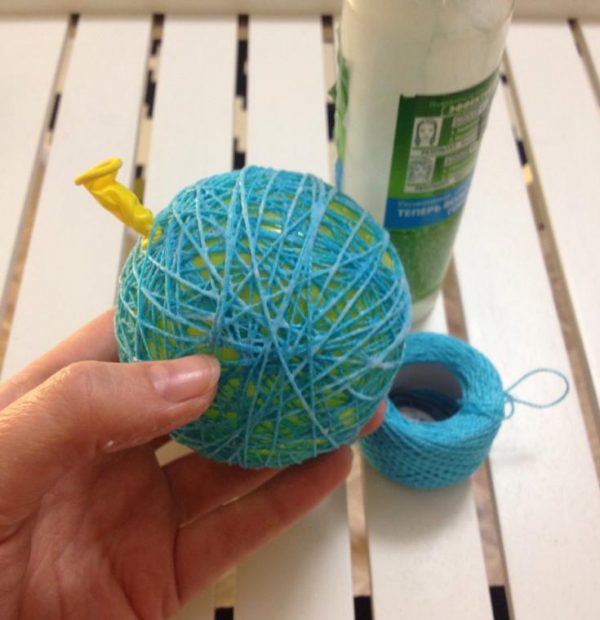

We carry out the work as follows:
- Place the ball on the bucket. This will be a drying area.
- We take the threads or trims of T-shirts one by one and dip them well in cement.
- We wrap the ball / ball with them like a New Year's ball.
- The finished structure is left to dry for 2-3 days.
- Then a ball or ball is pierced through the bottom hole and carefully pulled out.
- The sphere is installed anywhere in the garden.
Tip: These crafts can be used as overhead lights for light bulbs on a garden path.
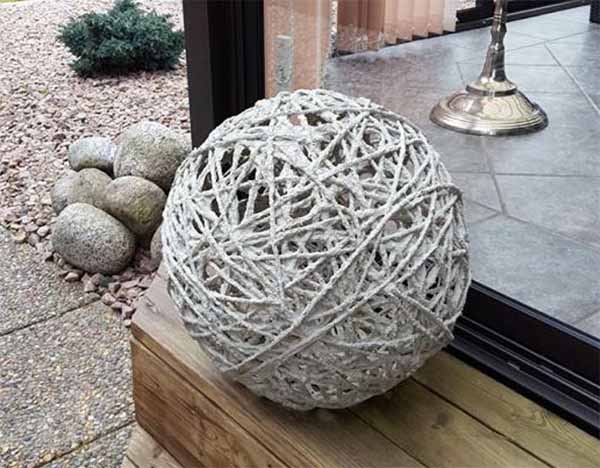

Thread ball
Interesting: DIY Alpine slide
Important rules
The concrete mixture is prepared as follows: Part of the cement and twice as much sand (if you need increased strength, you can take 1 part of the sand), part of the glue. Then a little water and a thick consistency is required. The solution will be ready to use and won't be a hassle.
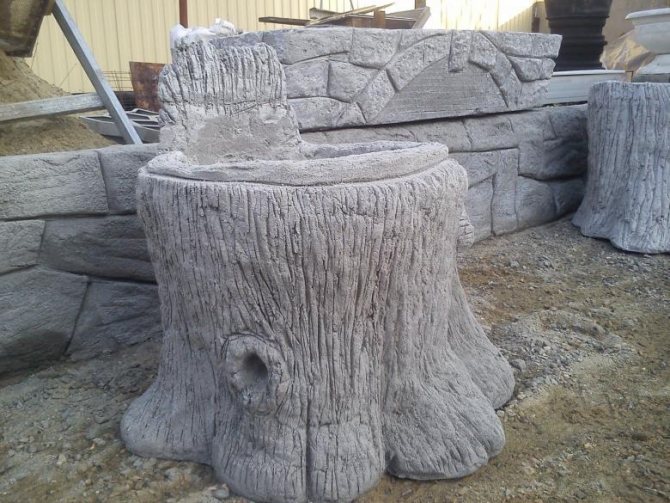

All crafts require warm conditions and a lot of time to solidify. The setting time can vary up to two weeks. To prevent cracking, the figure is covered with bags.


After the curing time has elapsed, the figure must be covered with a primer, then varnish or paint. If irregularities appear that aesthetically interfere and create inconvenience, a file and sandpaper are used.
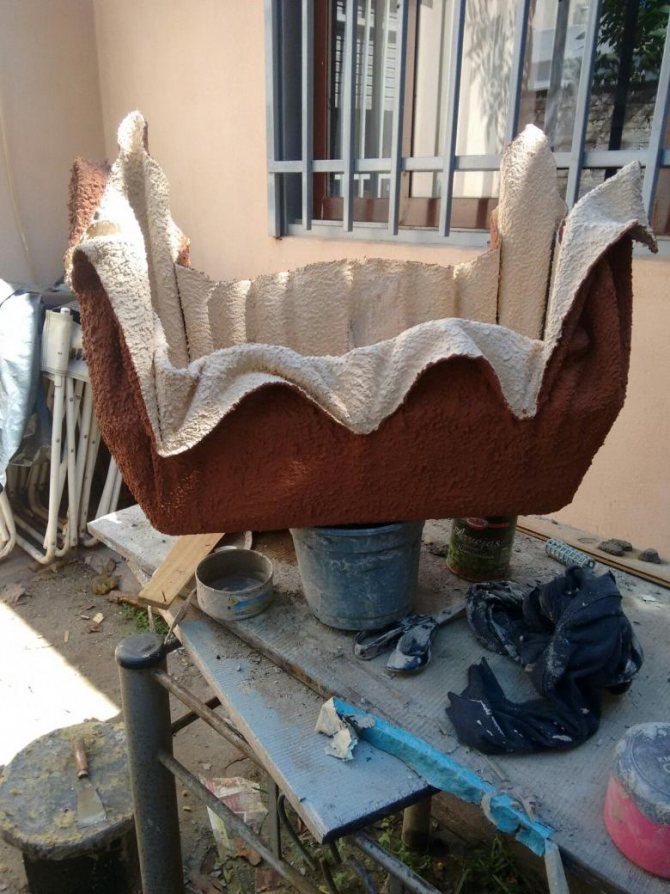

Cement can be replaced with plaster, this material allows you to make figures hollow and more decorative.
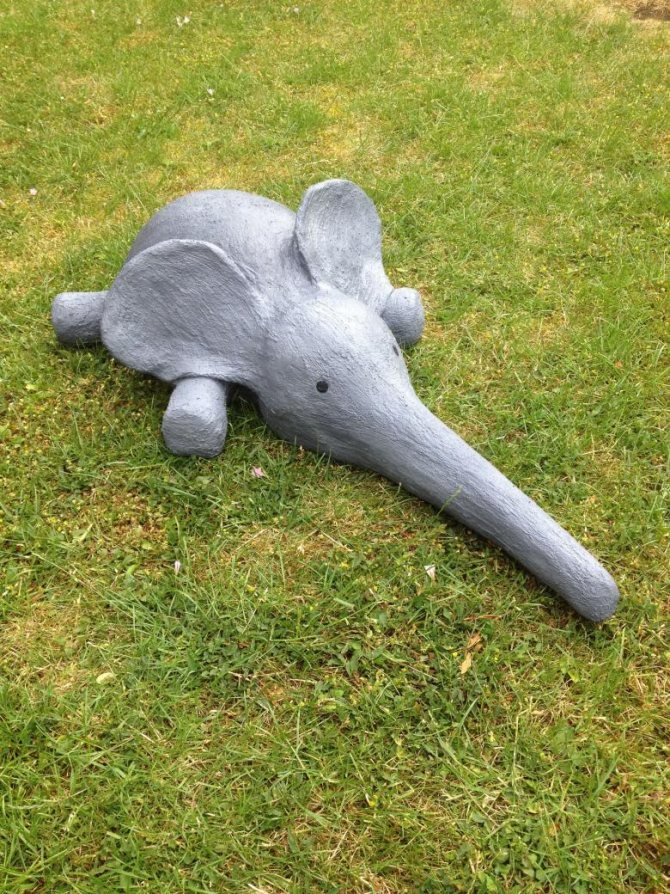

How to make a figurine of a squid for a pond
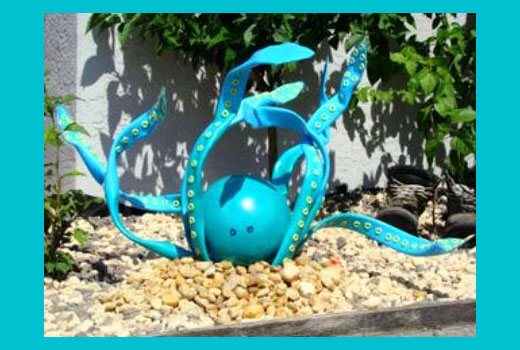

A squid is warming up on the shore of the reservoir. A very simple craft. Cut a few strips of leatherette, sew to make them hollow inside, insert flexible but stiff wire. If you can't sew the strips, just attach the strips to the wire, and then paint over. We attach (glue, sew) rings onto the tentacles - for texture. For such a figure, you can use old belts. The body of the squid is a ball, which we paint in the same color as the tentacles.
Concrete garden decorations
Sculptures cast by craftsmen are expensive and the simplest rules may not be followed during manufacture. And if you study and cast the figures with your own hand, you can eliminate all errors and expensive costs. In fact, you don't need a lot of knowledge and special skills to make concrete.
Everything you need can be found in the garage, and it is easy to buy cement at any hardware store.
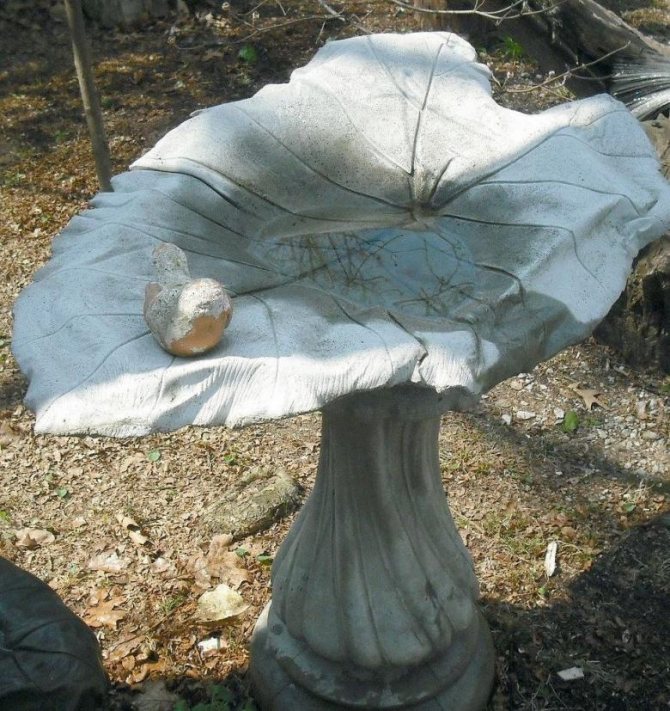

The basic requirements for making figures with your own hands will be described here.
- Purchase concrete grade M400 or higher.
- If using plaster, mix with moisture resistant additives.
- The water for the solution must be clean, boiled or potable. Due to this, the design will be of high quality and durable.
- For especially complex structures, a form and a frame must be assembled. Heavy figures must have a support.
- Figures cast from concrete must be covered with paint or varnish. This is for durability.
- Gypsum can be mixed with cement or glue for added strength.
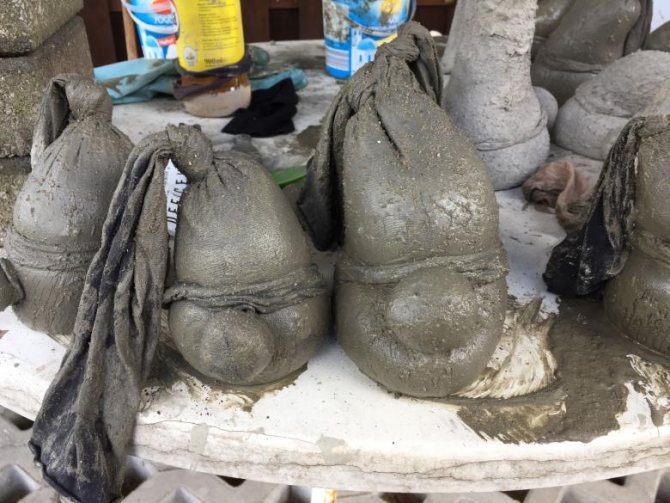

Concrete fungus
Another fun garden decorating idea is a fungus made from concrete. In this case, the cement mixture should be like plasticine, so that a future "craft" can be easily formed from it.
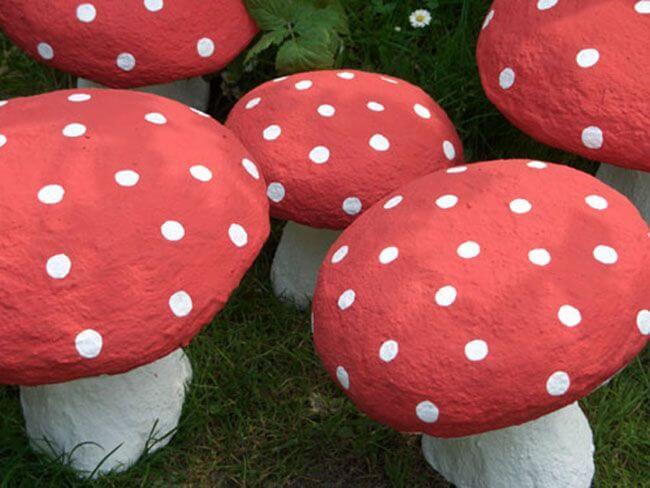

Cement can be used to make mushroom figurines
To obtain such a fly agaric:
- Use a bowl to make a small indentation in the sand to form a shape for the future mushroom cap.
- Lay any sheet on the bottom of the resulting hole so that the hat turns out to be rough.
- Place a piece of pipe or a tin without a bottom in the center to reinforce the structure.
- Form a "leg" from a rolled-up piece of roofing material or linoleum and fill this form with cement.
- Wait until both components of the concrete garden mushroom figure harden.
- Pour the top of the leg with a sand-cement compound and attach the cap to it, from which the pipe sticks out.
- Wait 3-4 days and give the sculpture any color you like.
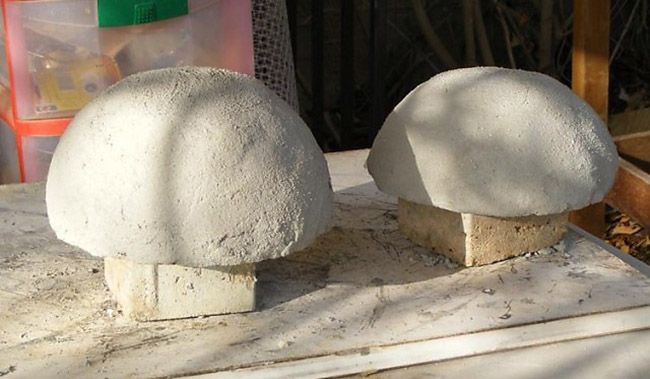

You can paint the finished figurine after it dries or during the preparation of the concrete solution.
Crafts making
One of the original handicrafts is meant for warm and cozy evenings. We will provide one option for you, and then improvise yourself and create more unique and individual figures.
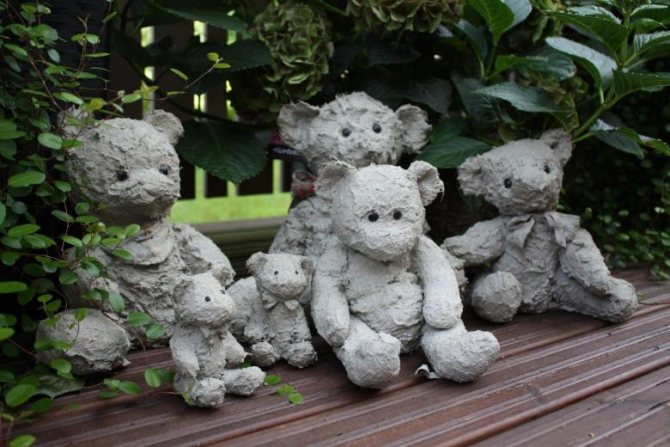

Craft lamp
- To create so many interesting crafts, you need a ball. We advise you to immediately find a few.
- The balloons inflate to different sizes, do not inflate too much, keep in mind that the cement layer will be small and the structure will be fragile.
- Cement is applied to the inflated balloon. It is important to completely cover the ball, but leave some space on top.
- After complete solidification, all the balls burst and get out of the finished craft.
- In honor of the last step, candles are lit and placed straight into the craft. These balls look extraordinary and beautiful.
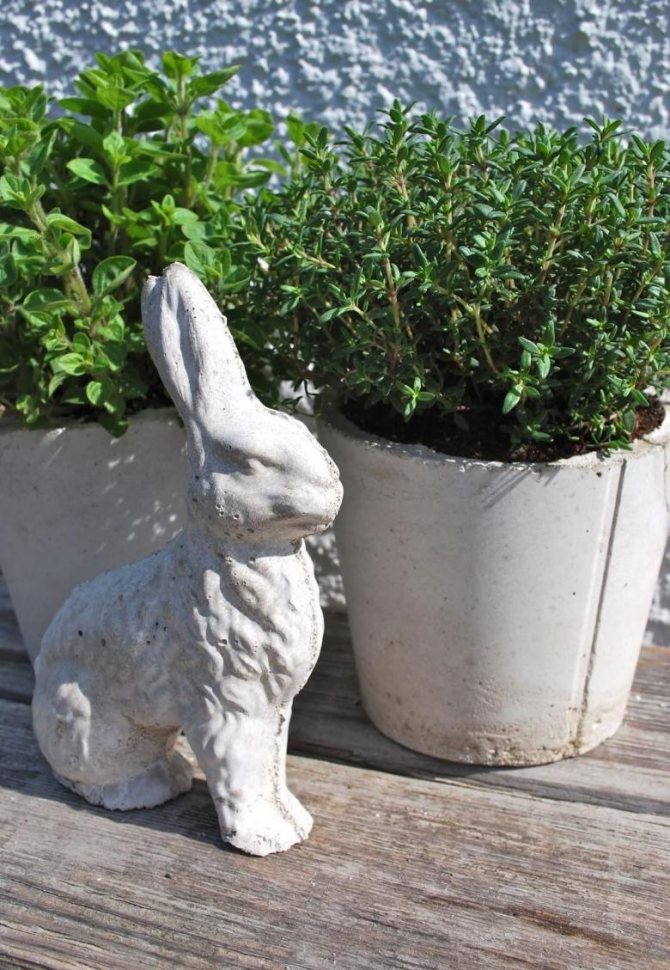

This method can be used with a rope soaked in cement mortar. All steps are identical, but a rope is used instead of cement. It looks even more unusual and specific. Guests will probably think that this is a store-bought decor and will be surprised that you can create it yourself.
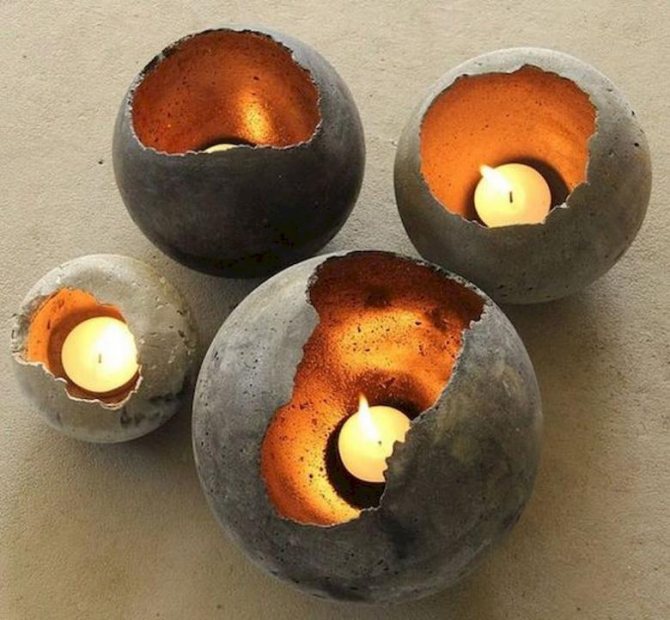

There are not only beautiful garden crafts. But also overly useful in everyday life.
For example, for the next craft, you will need only two brushes and all the materials from the previous homemade product.
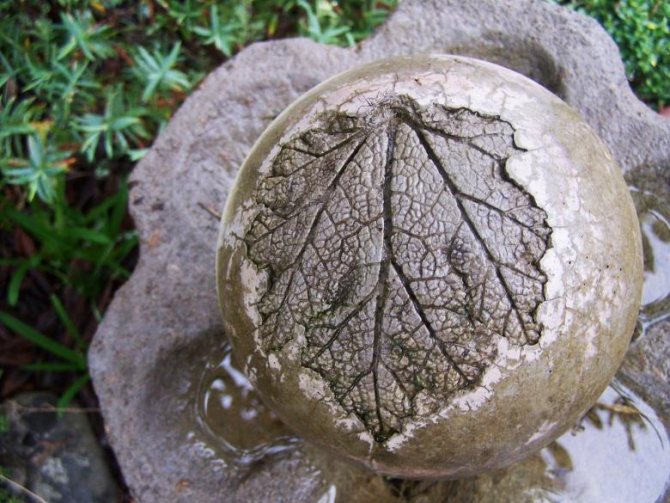

Pour cement into a plastic bowl and place the brushes at an equal distance from each other. After solidification, the main purpose of creating such a useful element immediately becomes clear.
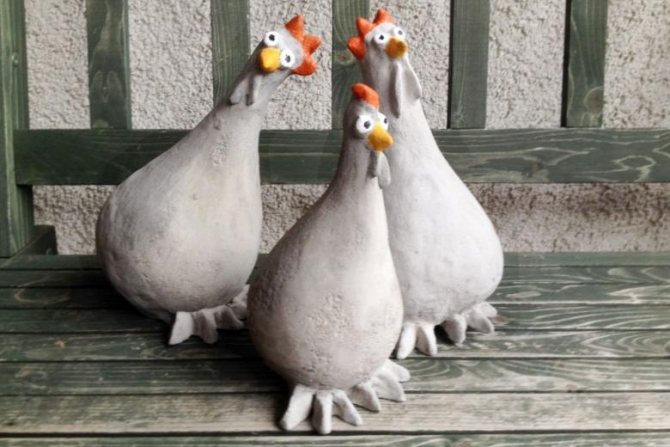

The craft is necessary for cleaning shoes. Moreover, it is done easily, and there are a lot of benefits.
It is worth paying close attention to the safety precautions when working with cement. There have been cases of the mixture getting into the eyes. This is okay if you quickly rinse with water and get rid of every grain that gets. But the feelings are unpleasant.
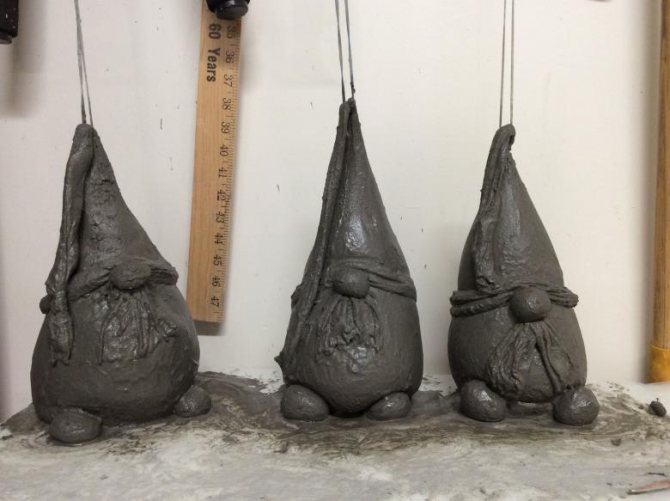

When you're creative, remember to put in your best effort and lots of love. We assure you that everyone around you will notice the love invested in the craft.
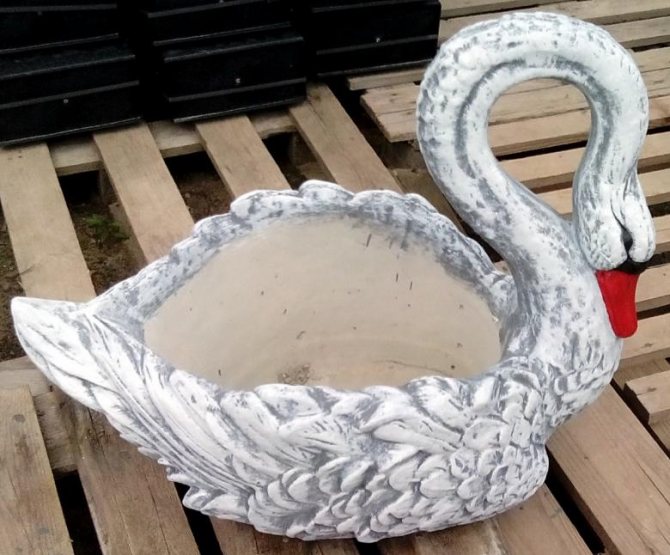

There are such masters in cement that it is simply difficult to call their finished figures a craft. They look like works of art and are great for any garden or backyard.
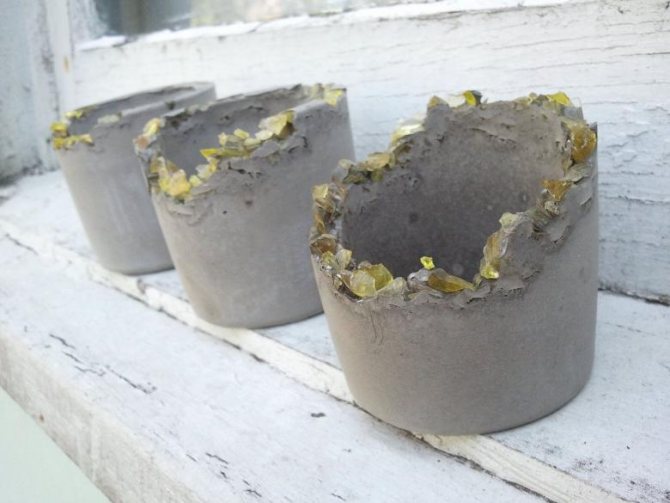

Once on the Internet there were pictures with concrete gargoyles on the fence. This is amazing. We believe in your endeavors and hope to see a few more gargoyles on the fence.
Several original ideas
Of course, not even every sculptor will be able to make a sculpture to a human height, and even from marble or cast from bronze. Moreover, this task is beyond the ability of an ordinary person. But you can show quite a bit of imagination and independently make whatever your heart desires from an ordinary cement-concrete mixture.
Using a minimal set of tools, you can make garden decorations such as:
- boulders, outwardly they will not differ from natural stones, will have a sufficiently high strength and low weight;
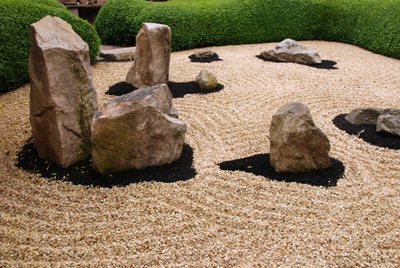

Rock garden - Japanese version of the garden design
- bright, colorful stone flowers;
- unique flower beds for a summer cottage;
- bird drinkers in the form of, for example, a leaf of a tree;
- just do-it-yourself decorative garden figurines made of cement - these can be either images of animals or fabulous creatures.
It makes sense to consider several "recipes" for making such jewelry.
Homemade boulder for a Japanese rock garden
To make a hollow boulder, in addition to the cement concrete mortar itself, you will also need a plaster mesh - a frame will be formed from it.
The work is performed in the following sequence:
- first, a frame is formed from a light material. Anything that is lightweight will do (scraps of foam, crumpled paper or plastic bags);
In the photo - the core of the boulder
- the core is wrapped with plaster mesh;
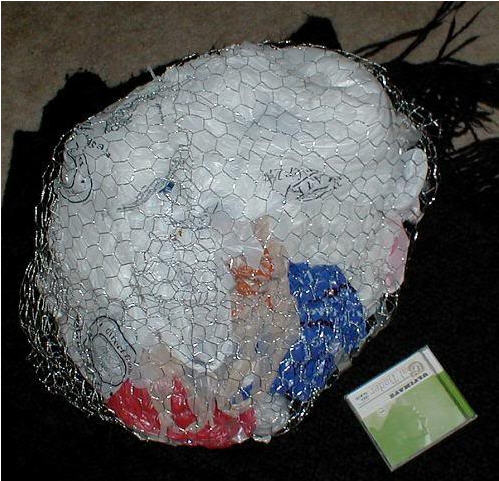

Plaster mesh is needed so that the solution is fixed on the surface of the frame
- after that, with a small spatula, the solution is applied to the frame;
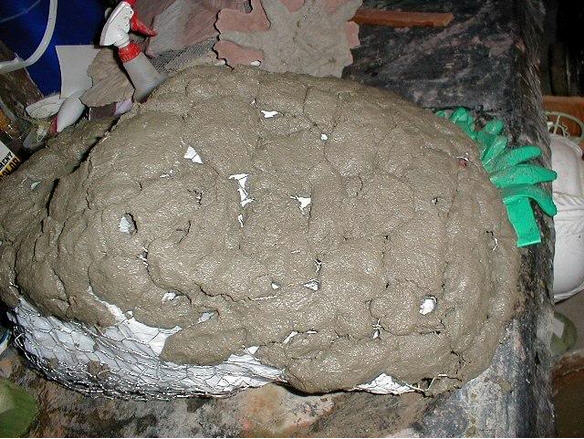

Application of the solution
Note! For maximum similarity with natural stone, the surface of the mortar does not need to be leveled.
- after that, it remains only to cover the finished product with cellophane and wait until it dries. If you dry a boulder outdoors, it is more likely to crack.
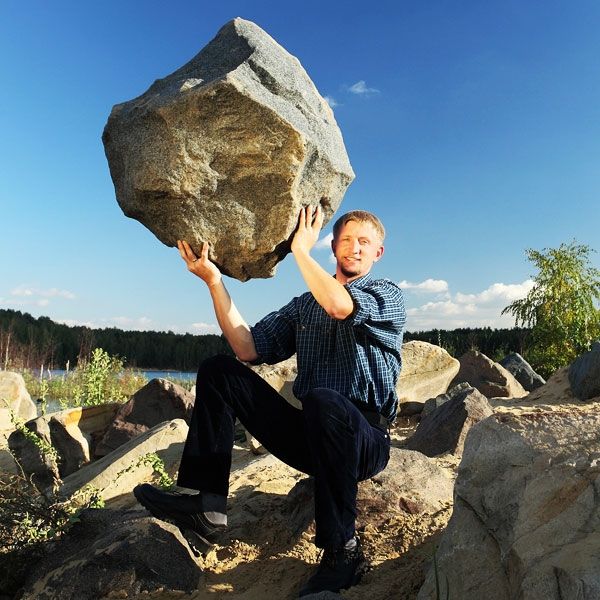

The finished boulder does not look different from the natural stone
In a similar way, you can make a perfectly round ball, such do-it-yourself cement figures for the garden, painted in bright colors, will revive even the most dull atmosphere.
The role of the formwork in this case will be played by an ordinary children's ball. A small hole is made in its wall and cement mortar is poured inside through it. After a couple of days, the "peel" can be removed, and the cement ball can be primed and painted in a bright color.
Leaf-shaped drinker
To make an original drinker, you will need an ordinary large leaf of burdock or any other, a little sand, a piece of polyethylene, cement concrete mortar and a piece of pipe with a diameter of about 10-15 cm.The main highlight is that all veins from a leaf of burdock will be printed on the surface of the cement mortar.
The instructions for making the figurine look like this:
- polyethylene is spread on a flat surface;
- a small sandy mound forms on it;
Note! In order for the sand to keep its shape well, it can be moistened.
- another piece of cellophane is laid on top of the sand, stretched and fixed with stones in the corners;
- a sheet is spread and smoothed over it;
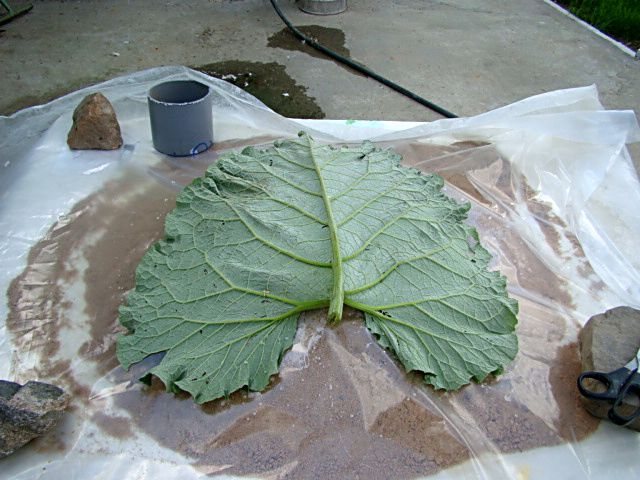

The sheet is smoothed and pressed against the polyethylene
Note! There will most likely be several small holes on the sheet. So that the solution does not flow out through them, you can simply lay small scraps of sheet on top of them;
- the sheet is coated with a solution;
- in the central part, a pipe is placed on a layer of cement concrete and filled with mortar.
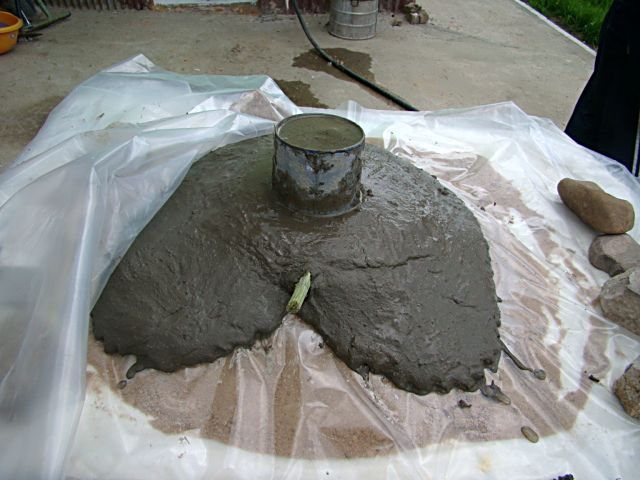

Solution finished
After that, it remains only to wait for the mixture to dry. Remnants of the sheet are removed, the concrete is primed and painted, it is possible to age its surface during painting, this will only enhance the aesthetic effect.
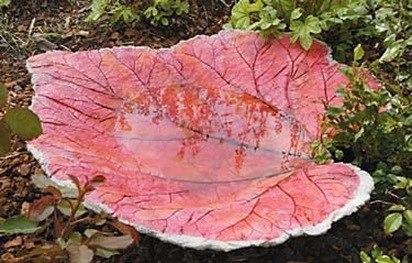

This is what the drinker looks like after staining
Homemade sculptures
If free time allows, then you can make more complex garden sculptures with your own hands from cement.
In general terms, the same approach is used:
- It is undesirable to make massive parts of the sculpture solid. So the weight of the figure will be too heavy and the cement concrete will take too long to dry. It is best to use old containers for the frame;
- for elongated elements, the frame can be made from reinforcing rods or wire.
For those who want to diversify the appearance of the garden, we can recommend a flowerbed-lake, on which figures of medium-sized swans will be located. The swans themselves will be made from a cement-concrete mixture.
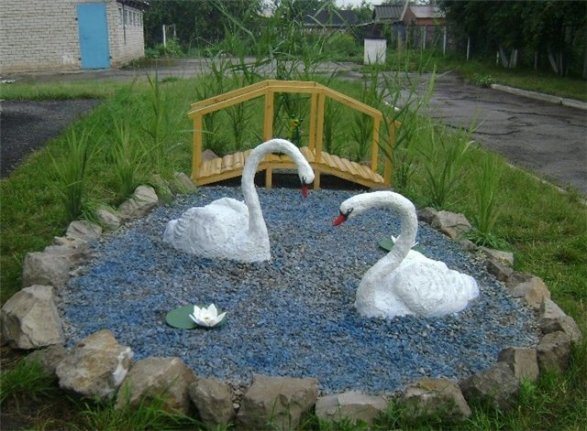

Concrete swans
The work is performed in the following order:
- the frame of the body is an inverted old basin, and for the neck you will have to weave a frame from wire;
- the frame is coated with a layer of cement-concrete mixture, a head is formed;
- The necessary surface texture will be given by small pebbles pressed into the cement concrete and painting.
Flowerbed in the form of a hand
A mini-flower bed (or flower stand) can be made using a regular medical glove. To do this, just fill it with a solution and wait for the mixture to harden. Then you just need to remove a thin layer of rubber and the original stone hand is ready for use.
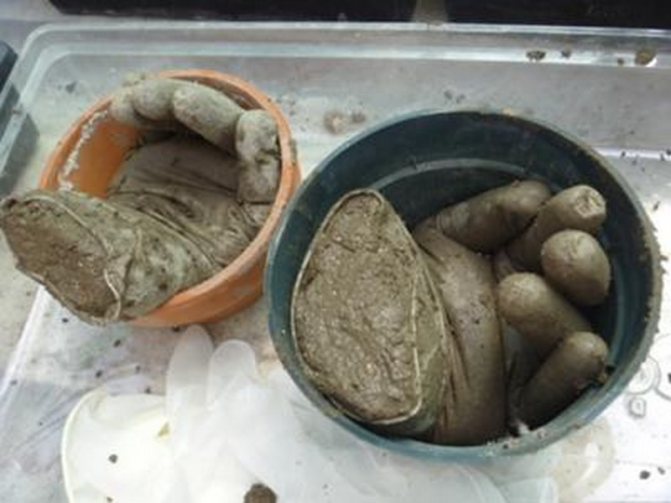

Gloves are filled with mortar
These are not all sculptures for a garden with their own hands made of cement; in this matter, the only limiter is imagination. With minimal effort and time, you can make cute boletus or bright fly agarics, they will look great in the back of the garden.
Another option for simple figures is stone flowers (from the hemispheres), ladybugs and other creatures that do not require attention to detail.
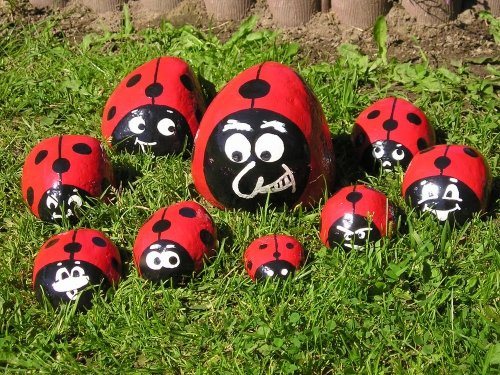

Family of ladybugs
Photo ideas for crafts from cement
Sculpture decor
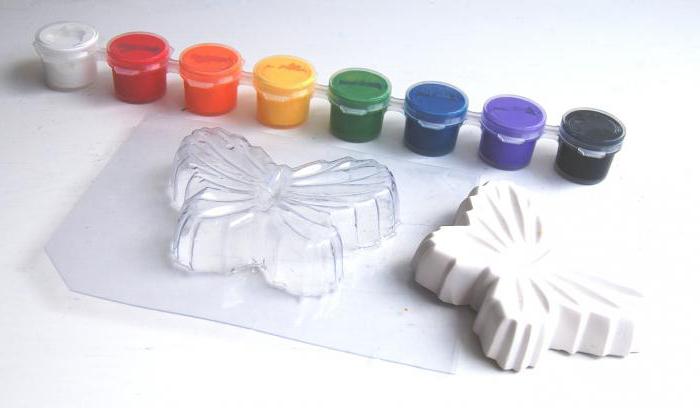

After the primer has dried, you can proceed to the most creative part of the process - the design of the sculpture. Plaster garden sculptures should be painted with the most durable paints. Small figurines and children's crafts can be painted with gouache. To paint the sculpture that will be in the room, you can use any paints and techniques for their application. After painting, you can additionally cover the product with a layer of transparent varnish to fix the decor. If appropriate, add decorative elements to the plaster sculptures. These can be separate beads and rhinestones, bows, textile details or special plastic figures.

